A multitude of red apples await to tantalize your taste buds! Sweet, tart, juicy, or crunchy – there is an apple to suit everyone’s preference. Whether you’re keen to sample an unusual variety or stick to a classic, this guide will help you pick the perfect red apple for you. Uncover the various types of red apples available and find out how they can bring something special to your dishes!
Key Takeaways:
- Knowing the different types of red apples allows for diverse culinary experiences with their unique flavor profiles, textures, and appearances.
- Fuji apples are crisp, juicy, and sweet-tart with a firm texture, making them great for snacking and baking.
- Honeycrisp apples have a unique texture that is both crisp and juicy, making them great for eating raw or in salads. They also have a sweet and slightly tart flavor.
- Envy apples are sweet and slightly tart with a dense, crisp texture, making them great for eating raw or cooking.
Red Apples: A Comprehensive Guide to 30 Unique Varieties
This article presents 30 different types of red apples that you should try. Each variety has a unique taste, texture, and nutritional value. In the following paragraphs, we will explore the different varieties of red apples, their health benefits, and ways to incorporate them in your meals.
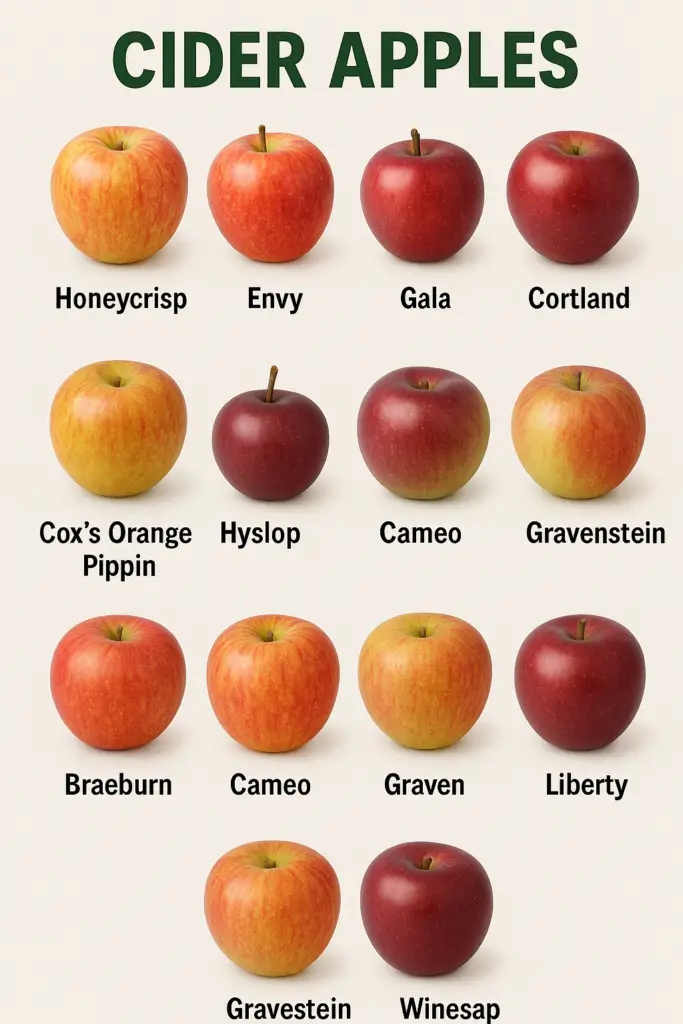
When it comes to red apples, the possibilities are endless. From sweet to sour, crunchy to soft, each variety has its own distinct flavor and aroma. In this article, we introduce you to 30 types of red apples that are worth exploring.
As we dive into each type of apple, we will examine their unique characteristics and nutritional benefits.
For instance, some apples are great for baking, while others are better suited for salads or snacking. We will also look at their vitamin and mineral content, fiber content, and how they can be used in different recipes.
While some types of red apples are more well-known, such as the Red Delicious or the Fuji apple, others might be new to you. As we uncover each variety, you will learn about their origin, flavor profile, and ideal uses. There are apples that are perfect for making cider or hard cider, while others are great for snacking or cooking.
Lastly, we share some suggestions on how to incorporate these apples into your everyday meals. Whether you are making a delicious apple pie, or simply slicing an apple to enjoy with a snack, there are many ways to enjoy this versatile fruit. By exploring different types of apples, you will not only broaden your taste buds, but also reap the nutritional benefits of this delicious fruit.
The versatility of red apples
Red apples come in a variety of types, each with unique characteristics and flavors. From the juicy Honeycrisp to the tangy Envy, these apples are versatile and can be eaten as a snack or incorporated into various dishes. Their sweetness comes from natural sugar, making them a perfect source of energy.
Red apples offer many health benefits such as minerals and vitamins like Vitamin C. Different types of red apples have varying levels of malic acid, which can affect their tartness level. They also have different textures and flavors based on their characteristics. For instance, Cox’s Orange Pippin has an almost honey taste while Baldwin Apples are bitter-sweet, yet ideal for cider making.
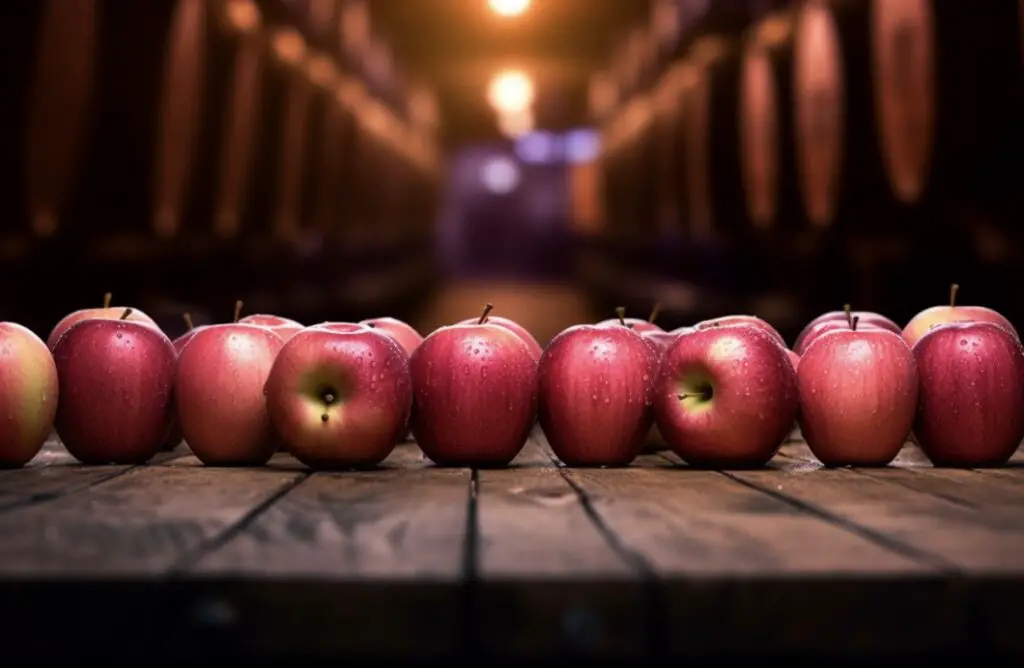
Accordingly, there are some delicious varieties of red apples to try out including Fuji Apples, Empire Apples, Spartan Apples, Pazazz Apples and Jazz Apples among others. Some smaller varieties such as Lady Alice Apples and Pink Lady Apples still pack a flavorful punch. In addition to eating straight out of hand or preparing fruit salads with them, they’re ideal for baking pies and cakes or even creating an apple sauce topping for pork chops!
Studies show that antioxidant compounds in red apple skin called polyphenols can protect against cancer-like cells’ multiple actions. The Journal Nature reports that one serving per week of flavonoid-rich foods could help reduce the risk of pancreatic cancer by 25 percent!
Importance of knowing the different types of red apples
Knowing the Varieties of Red Apples for Reaping Nutritional Benefits
Different types of red apples provide unique nutritional benefits to our bodies, and hence it’s important to know each one of them. Apple lovers understand the value of good quality fruit varieties and how they can deeply enjoy the taste sensations that come with each variety.
Here, we will explore and unravel 30 different types of red apples that you should taste.
| Variety Name | Unique Attributes |
|---|---|
| Honeycrisp | Juicy and crunchy |
| Envy | Sweet but tangy with a crisp texture |
| Gala | Medium size with a mildly sweet flavour |
| Cortland | Large, juicy with a tart flavour |
| Cox’s Orange Pippin | Sweet and aromatic |
| Hyslop Crabapple | Astringent with tart flavour – best for cider making |
| Macoun | Sweet, crispy and juicy |
| McIntosh | Juicy, slightly tart – ideal for apple sauce or baking |
| Braeburn | Firm texture with sweet-tart flavours – rich in vitamins C and K |
| Cameo | Red-yellow stripes with distinct ivory shade inside – perfect for salads or pies |
| Gravenstein | Ripe early in the season; used for juice, sauce and baked goods |
| Liberty | Small to medium-sized apple with a sweet-tart flavour – high disease resistance |
| Winesap Apples | Mildly tannic juice make them great in recipes like cider vinegar recipe |
| Kiku | Mildly sweet aroma fruit great eaten fresh raw & has fewer calories than other varieties |
| Sugar Bee Apples | Mildly tart flavor but almost caramel-like texture sliced on sandwiches |
| Red Delicious | Classic red apple with a mildly sweet flavor and crisp texture |
| Fuji | Large, crunchy apple with a balanced sweet and tart flavor |
| Pink Lady | Distinctive sweet-tart flavor and crisp, juicy flesh |
| Jonathan | Tart and tangy apple with a firm texture and good for baking |
| Northern Spy | Large, crisp apple with a sweet-tart flavor and excellent for pies |
| Rome Beauty | Mildly tart apple with a dense texture, great for baking and cooking |
| Arkansas Black | Dark red apple with a complex sweet-tart flavor and firm flesh |
| Ambrosia | Sweet and fragrant apple with a crisp, juicy texture |
| Crimson Crisp | Crisp and juicy apple with a balanced sweet-tart flavor |
| Jazz | Firm and crunchy apple with a sweet-tart flavor |
| Granny Smith | Iconic tart apple with a firm, crisp texture and excellent for baking |
| Pink Pearl | Pink fleshed apple with a mildly tart flavor and refreshing juiciness |
| SnowSweet | Sweet and tangy apple with a snowy-white flesh and crispy texture |
| RubyFrost | Deep red apple with a sweet-tart flavor and excellent storage life |
| Golden Delicious | Yellow-red apple with a mild and sweet flavor |
| EverCrisp | Extremely crisp apple with a sweet and tart balance |
| Zestar | Bursting with juiciness and a balance of sweet and tart flavors |
These are just a few examples out of an assortment of delicious apple varieties worth exploring. While most people tend to stick with the familiar and famous fruit like Red Delicious, a whole new world of flavours and textures awaits anyone who takes the chance to try something new and exciting.
If you want to reap maximum health benefits from apples, choosing the right type is vital. For instance, some red apple varieties contain high levels of malic acid that help in maintaining healthy skin while others have astringent properties that neutralize excessive oil production on the scalp. Also, bitter-sweet apple types make for ideal cider making. The range of nutrients found in apples includes fibre to aid digestion and absorption of nutrients like Vitamin C which can keep colds at bay.
To fully enjoy these benefits, strive to consume red apples as part of your regular diet by including them in fresh salads, juice drinks or even roasted as a side dish. Additionally, you can mix different apple varieties such as green and honeycrisp apples, creating unique taste sensations that leave you craving more.
Suitability for cider making
When it comes to crafting delicious and flavorful ciders, the choice of apple variety plays a crucial role. The unique characteristics of different apple varieties can greatly impact the taste, aroma, and overall quality of the resulting cider.
In this section, we will explore the suitability of various apple varieties for cider making, providing insight into which varieties are highly sought after by cider enthusiasts and professional cider makers.
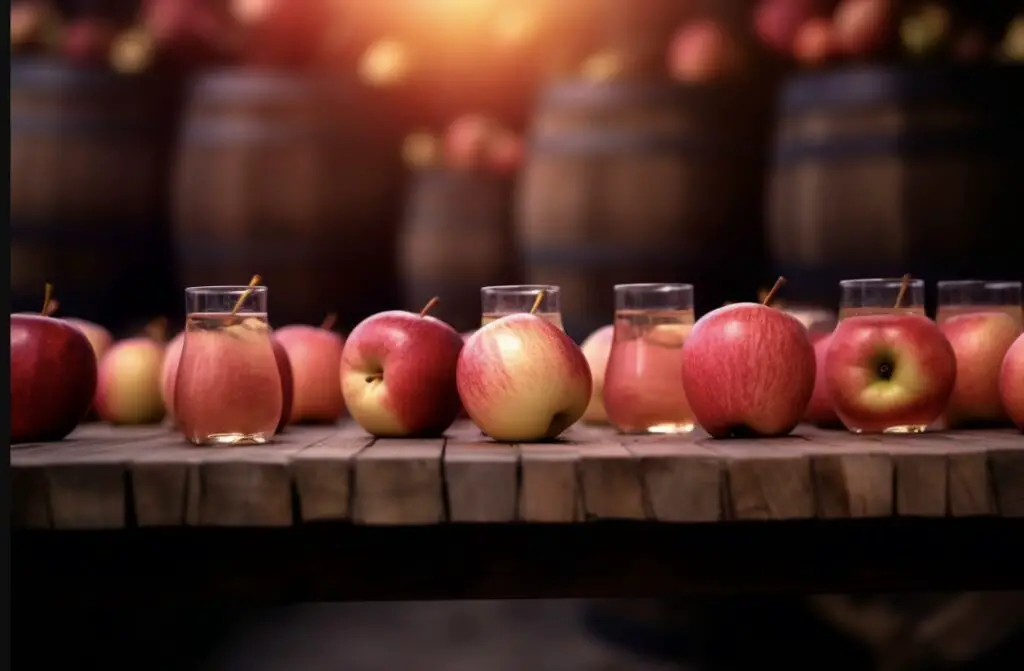
Cider making suitability is determined by several factors, including the balance of sugars, acidity, tannins, and flavor profiles present in the apples. Some apple varieties excel in providing the desired components needed to create complex and well-rounded ciders, while others may be more suited for specific cider styles or blending purposes.
By understanding the cider making suitability of different apple varieties, cider makers can make informed choices to achieve the desired characteristics and flavor profiles in their ciders.
In the following subsections, we will delve into the cider making suitability ratings for a variety of apple cultivars. These ratings are provided as a general guide, considering the unique attributes and qualities of each apple variety.
However, it is important to note that personal preferences and the desired cider style may vary among cider makers, leading to variations in the selection and combination of apple varieties.
Whether you are an aspiring cider maker or simply interested in understanding the role of apple varieties in cider production, this section will serve as a valuable resource to help you navigate the diverse world of cider making and make informed decisions regarding the apple varieties best suited for your cider-making endeavors.
So, let’s embark on a journey through the suitability ratings of various apple varieties for creating exceptional ciders.
| Variety Name | Cider Making Suitability Rating |
|---|---|
| Honeycrisp | Moderate |
| Envy | Low |
| Gala | Low |
| Cortland | Moderate |
| Cox’s Orange Pippin | High |
| Hyslop Crabapple | Very High |
| Macoun | Low |
| McIntosh | Low |
| Braeburn | Low |
| Cameo | Low |
| Gravenstein | High |
| Liberty | Low |
| Winesap Apples | High |
| Kiku | Low |
| Sugar Bee Apples | Low |
| Red Delicious | Low |
| Fuji | Low |
| Pink Lady | Low |
| Jonathan | Low |
| Northern Spy | Low |
| Rome Beauty | Low |
| Arkansas Black | High |
| Ambrosia | Low |
| Crimson Crisp | Low |
| Jazz | Low |
| Granny Smith | Low |
| Pink Pearl | Low |
| SnowSweet | Low |
| RubyFrost | Low |
| Golden Delicious | Low |
| EverCrisp | Low |
| Zestar | Low |
Here are a few examples of apple varieties from the table and their suitability for cider making:
- Cox’s Orange Pippin: With a high cider making suitability rating, Cox’s Orange Pippin is highly regarded among cider makers. This apple variety contributes a sweet and aromatic flavor, making it an excellent choice for adding complexity to ciders.
- Hyslop Crabapple: Considered to have a very high cider making suitability rating, Hyslop Crabapple is particularly sought after in cider production. Known for its astringent and tart flavor, it is a preferred choice for making cider due to its high tannin content.
- Gravenstein: With a high cider making suitability rating, Gravenstein apples are prized for their early ripening and are frequently used in cider production. They provide a balance of sweetness and acidity, making them versatile for various cider styles.
- Winesap Apples: Winesap Apples have a high cider making suitability rating, primarily due to their mildly tannic juice. This characteristic makes them well-suited for creating ciders with a more pronounced body and depth of flavor.
- Honeycrisp: Honeycrisp apples, with a moderate cider making suitability rating, offer a pleasing balance of sweetness and acidity. While they are not specifically bred for cider making, their unique flavor and crisp texture can contribute to a refreshing and enjoyable cider profile when used in blends.
It’s important to note that the cider making suitability ratings provided are general guidelines and may vary based on individual cider makers’ preferences and desired cider profiles. Cider makers often experiment with different apple varieties and blends to achieve the desired taste and complexity in their ciders.
Fuji Apples
Hailing from Japan, this particular type of apple has taken the global market by storm. With its unique blend of sweetness and crunchiness, this apple is a must-try for all apple lovers out there.
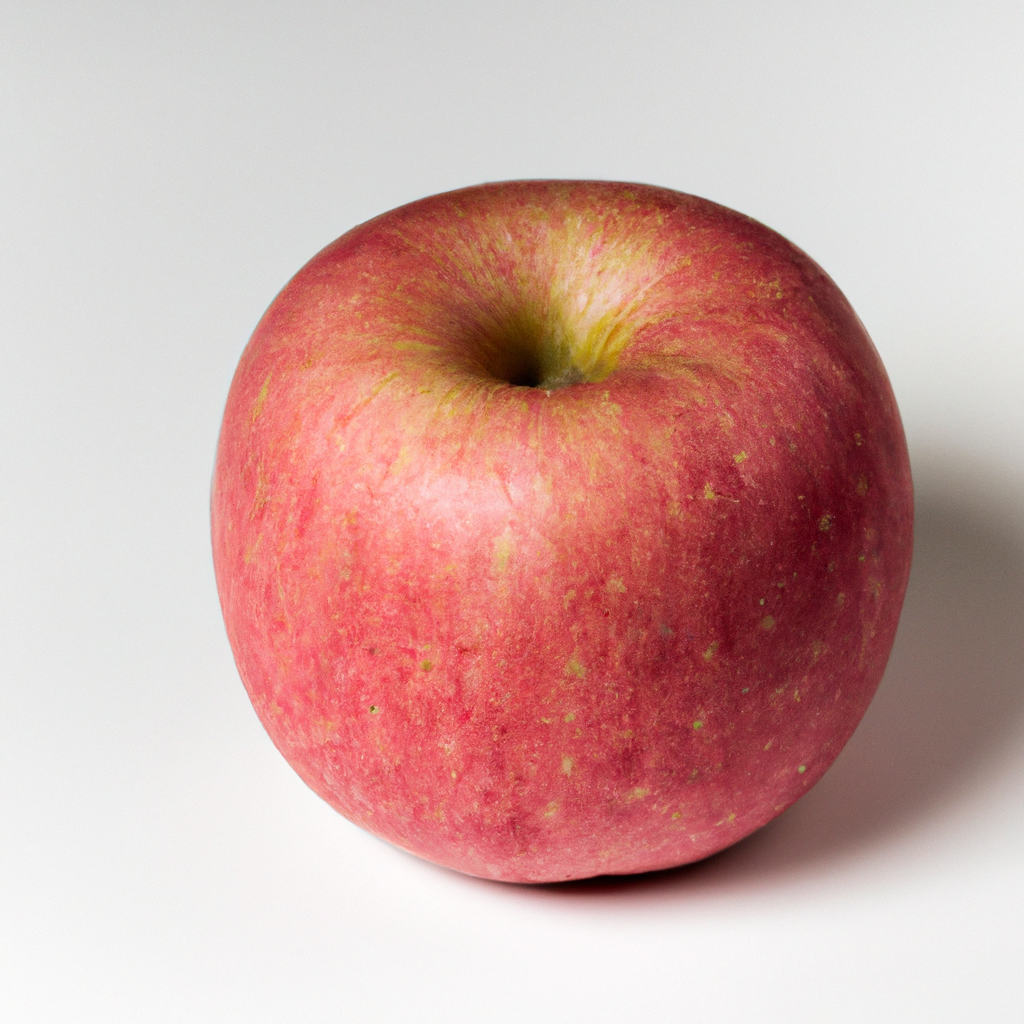
Fuji apples are known for their crispiness and sweet taste. They are primarily grown in Japan and the United States. They are a popular choice for desserts and salads. Fuji apples have a long shelf-life compared to other apples. They are a rich source of fiber and nutrients such as Vitamin C and potassium.
With its vibrant red color and a crispy texture that explodes with every bite, this kind of apple is perfect for snacking and can be a great addition to various recipes.
Interestingly, the Fuji apple is a hybrid of two American apple varieties – Red Delicious and Virginia Ralls Genet. It was developed in the late 1930s and was first grown in Japan. Today, it is widely cultivated and enjoyed around the world for its unique taste and texture.
Flavor profile and origin
Fuji Apples – Flavor profile and origin: Fuji apples have a sweet, juicy and crisp flavor profile, with hints of honey and vanilla. The origins of Fuji apples trace back to Japan, where it was created in the 1930s by crossing two American apple varieties. Today, it’s widely grown around the world.
Flavor profile and origin Table:
| Apple Variety | Flavor Profile | Origin |
|---|---|---|
| Envy Apples | Sweet with a touch of tartness | New Zealand |
| Gala Apples | Mildly sweet with a hint of vanilla | New Zealand |
| Cortland Apples | A balance between sweet and tangy | USA, 1898 |
| Cox’s Orange Pippin | Complex mixture of sweetness and acidity | England, 1825 |
| Macoun Apples | Tart with a hint of sweetness | USA, 1923 |
| Braeburn Apples | Balanced mix of sweet, tart, and bitter flavors | New Zealand |
| Cameo Apples | Crisp texture with a taste like honeydew melon. | Washington State |
| Gravenstein Apples | Soft flesh with tart and spicy flavors. Suitable for cooking; used to make apple cider. | Denmark, 1669 |
| Liberty Apple | Mildly tart; faint aroma with banana notes. Suitable for making cider | New York State |
Unique details: Apart from eating fresh as snacks or in desserts, Fuji apples are also good for cider making due to its balanced sugar-acid content that gives the ideal combination for bitter-sweet ciders. It is also among the few varieties that hold its shape when baked.
Pro Tip: To experience Tannin-free juices from apples like Fujis or Galas without compromising on taste or flavor profile use cold-pressed techniques instead of traditional high-heat methods.
Culinary uses
For those wanting to explore the diverse culinary applications of red apples, we have compiled a list of recommendations for your reference. From sweet to tart flavors and tender to firm textures, the versatility of red apples is unparalleled. Whether you are a beginner or an experienced cook, these 30 types of red apples will inspire a fresh perspective on classic dishes.
| Variety Name | Culinary Use |
|---|---|
| Honeycrisp | Versatile apple, great for snacking, salads, baking, and cider |
| Envy | Excellent for fresh eating and salads |
| Gala | Ideal for snacking, salads, and applesauce |
| Cortland | Suitable for eating fresh, baking, and applesauce |
| Cox’s Orange Pippin | Exceptional flavor for eating fresh and in desserts |
| Hyslop Crabapple | Primarily used for making cider, jelly, and preserves |
| Macoun | Perfect for snacking, salads, and baking |
| McIntosh | Classic choice for applesauce, pies, and baking |
| Braeburn | Holds shape well when baked, ideal for pies and tarts |
| Cameo | Great for eating fresh, salads, and pies |
| Gravenstein | Excellent for juice, applesauce, and baking |
| Liberty | Versatile apple suitable for eating fresh, baking, and applesauce |
| Winesap Apples | Ideal for making cider, applesauce, and baking |
| Kiku | Enjoy fresh, perfect for salads and snacking |
| Sugar Bee Apples | Slices well for sandwiches, adds a unique texture and flavor |
| Red Delicious | Mostly used for fresh eating and garnishing |
| Fuji | Great for snacking, salads, baking, and applesauce |
| Pink Lady | Excellent for eating fresh, salads, and baking |
| Jonathan | Versatile apple for eating fresh, baking, and applesauce |
| Northern Spy | Ideal for pies, applesauce, and baking |
| Rome Beauty | Excellent for baking, applesauce, and cooking |
| Arkansas Black | Great for eating fresh and storage, also used in baking |
| Ambrosia | Enjoy fresh, suitable for salads and snacking |
| Crimson Crisp | Ideal for snacking, salads, and baking |
| Jazz | Versatile apple for eating fresh, baking, and salads |
| Granny Smith | Classic choice for baking, applesauce, and salads |
| Pink Pearl | Unique appearance for salads and eating fresh |
| SnowSweet | Enjoy fresh, suitable for salads, snacking, and baking |
| RubyFrost | Excellent for eating fresh, baking, and applesauce |
| Golden Delicious | Suitable for eating fresh, baking, applesauce, and salads |
| EverCrisp | Holds shape well when baked, ideal for pies and tarts |
| Zestar | Enjoy fresh, suitable for salads and snacking |
Now you can see the culinary uses of each apple variety and choose the ones that best suit your needs!
Aside from their traditional uses in pies and crisps, many chefs have discovered unique ways to incorporate red apples into their dishes. For example, add thin slices of green apples to a coleslaw salad or mix diced Cox’s Orange Pippin apples to stuffing mixtures for added texture and flavor depth.
Did you know? The McIntosh apple was first discovered in Ontario, Canada by John McIntosh in the early 19th century!
Honeycrisp Apples
Honeycrisp Apples: A Delightful and Crispy Red Fruit
Honeycrisp apples are a variety of red apples which are known for their juicy and crispy texture. These apples are a perfect blend of sweet and tart flavors and have a distinct aroma that makes them stand out from other types of red apples.
- Honeycrisp apples have a perfect balance of sweetness and acidity that makes them ideal for eating raw.
- These apples have a crispy and juicy texture that gives a delightful crunch with every bite.
- Honeycrisp apples have a beautiful red and yellow skin that is shiny and smooth.
- They are an excellent source of vitamins, minerals, and antioxidants, making them an ideal choice for a healthy diet.
- Honeycrisp apples can be used in various dishes, including salads, pies, and cakes, giving a unique and delicious flavor to them.
- These apples are easily available in grocery stores and farmers’ markets throughout the year.
Apart from being a popular variety of red apples, Honeycrisp apples have some unique characteristics that make them stand out. These apples are said to have originated from the University of Minnesota and have gained popularity worldwide due to their taste, texture, and versatility.
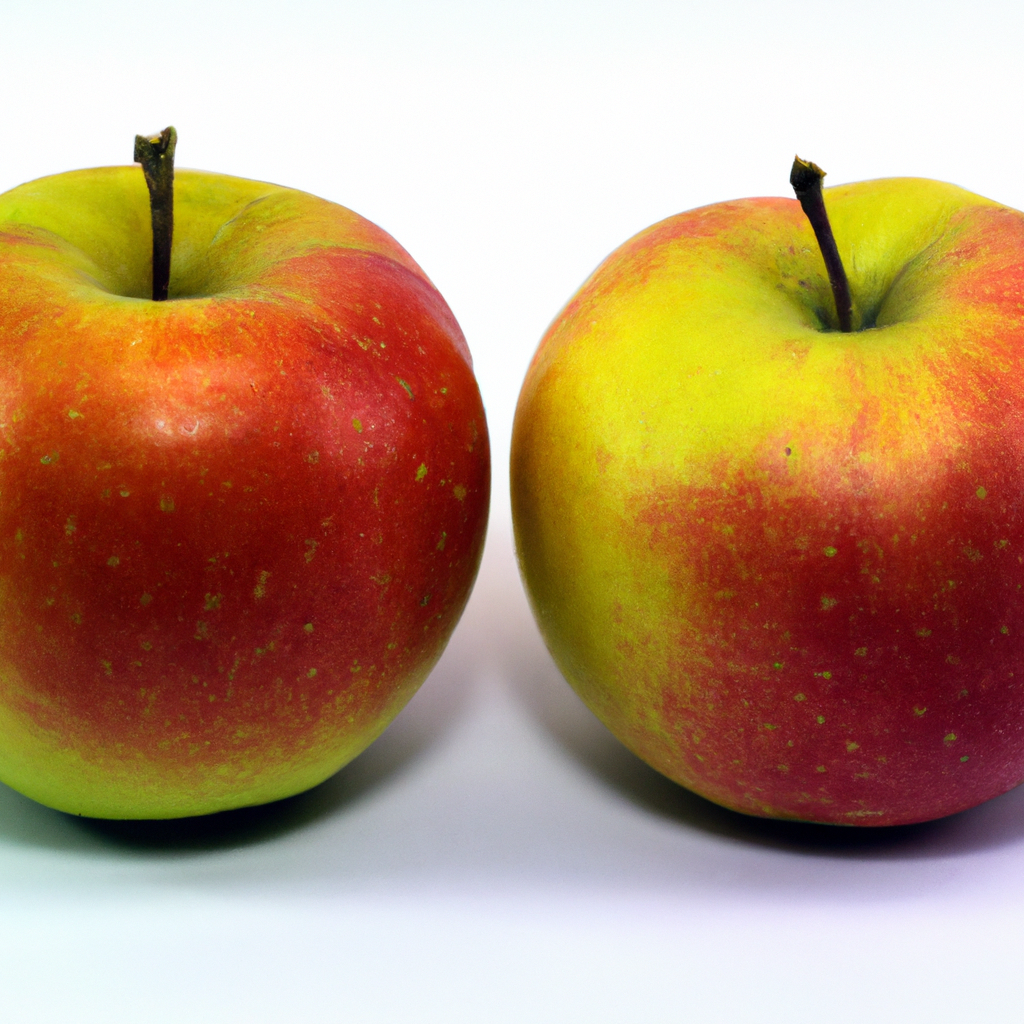
To ensure that you don’t miss out on the fantastic taste and health benefits of Honeycrisp apples, try incorporating them into your diet today. These apples can be eaten as a snack, used in cooking, or added to various desserts. So go ahead, grab a Honeycrisp apple, and enjoy its unique and delightful taste!
Flavor profile and appearance
The Honeycrisp apples offer a distinctive and delightful taste with their tangy flavor combined with a sweet and juicy profile. They have the typical red color with yellow undertones, resulting in an attractive appearance.
Below is a table showcasing the characteristics of a selection of red apples:
| Type of Apple | Flavor profile | Appearance |
|---|---|---|
| Honeycrisp | Tangy and sweet | Red with yellow undertones |
| Cox’s Orange Pippin | Sweet with a hint of tartness | Red-orange and yellow-green hues |
| McIntosh Apples | Juicy and slightly tart | Bright red skin with green highlights |
| Smitten. | Sweet and crispy | Deep red color |
These apples also provide health benefits such as dietary fibers, antioxidants, and vitamin C. However, be aware that some varieties may contain a bitter-sweet taste or are soft.
Interestingly, apples have been cultivated for over 4 millennia, evolving into countless hybrids since ancient Roman times. Thanks to their versatility and simple storage needs, they still hold their ground as one of the world’s favorite fruits today.
Culinary uses
When it comes to ‘Utilization in Cuisine’, Honeycrisp apples are versatile. They can be used in dishes such as salads, pies, cakes, sauces and more.
| Culinary Uses | Examples |
|---|---|
| Fresh Eating | Consuming as a Snack |
| Baking | Pies, Cakes |
| Cooking | Sauces, Mains |
| Salad | Toppings |
Moving beyond the uses mentioned above, Honeycrisp apples can be stored for an extended period if refrigerated after catching. The unique sweet-tart taste and crunch are what makes Honeycrisp apples appealing to people worldwide.
Furthermore, there are various other red apple types out there that may be worth trying. Some examples include Cox’s Orange Pippin and Bitter Sweet varieties.
If you’re looking to use Honeycrisp apples in cooking or baking, consider balancing their sweetness with savory flavors like cheese, nuts or meats. This will give a depth of flavor to your dish while allowing the Honeycrisp apple’s characteristics to shine through.
Envy Apples
Envy Apples – An Overview
Crisp, juicy, and uniquely flavored, Envy Apples are a must-try for any apple lover.
This premium variety is a hybrid of Braeburn and Royal Gala apples, and it offers a distinctive taste that you won’t find in other apples.
Three Key Features of Envy Apples
- Appearance: Envy Apples have a striking deep red color with speckled skin. The flesh is consistently white, and it has a dense, crunchy texture.
- Flavor: Envy apples have a sweet, honeyed flavor with hints of tartness. They are incredibly juicy, making them a great choice for snacking or baking.
- Health Benefits: Envy Apples are packed with essential vitamins, minerals, and antioxidants. They are high in fiber, and they contain polyphenols that have been linked to numerous health benefits.
Unique Details about Envy Apples
Envy Apples were first developed in New Zealand by Dr. Ian and Susan Waite. They are now grown in various regions worldwide, including the United States, Europe, and Chile. Envy Apples are harvested later in the season than most other varieties, which allows the fruit to fully develop its complex flavor.
Suggestions for Enjoying Envy Apples
To get the most out of your Envy Apples, try pairing them with cheese or adding them to salads for a sweet and savory twist. You can also use them in pies, cobblers, and crisps. To keep your Envy Apples fresh, store them in the refrigerator or a cool, dry place. With their unique flavor and texture, Envy Apples are sure to become a favorite for apple lovers everywhere.
Flavor profile and texture
The unique elements that define the taste and texture of different types of red apples are fascinating. The mix of sourness and sweetness is what makes each variety distinct. Envy apples, for instance, are firm to the touch, incredibly juicy, and crispy with a luxurious texture. Other varieties like coxs orange pippin highlight a more bitter sweet taste.
Below is a table representing the different flavor profiles and textures of various types of red apples:
| Apple Variety | Flavor Profile | Texture |
|---|---|---|
| Envy | Sweet & Sour | Crispy & Juicy |
| Coxs Orange Pippin | Bitter Sweet | Firm & Crunchy |
| Gala | Very Sweet | Crispy & Juicy |
| Honeycrisp | Sweet & Tangy | Crunchy & Juicy |
It’s interesting to note that variations such as the Granny Smith apple have high acidity content compared to others like the honeycrisp which emphasizes a tangy sweetness. Also noteworthy is that some types of apples like the Fuji apple have flesh that turns brown quickly after being cut open compared to others.
What’s remarkable about these apples is how they’ve stood the test of time with their flavors evolving through generations. Some say Rome wasn’t built in a day, but it sure does seem like apples have been perfected throughout history.
Culinary uses
The multi-purpose nature of Envy apples extends beyond snacking. These red apples can be used in various culinary applications, making them one of the top choices for fruit enthusiasts.
Specifically, Envy apples are great for making apple pies, apple juices, and even apple chips due to their crunchy texture and sweet-tart taste. Moreover, they add a vibrant color and refreshing flavour when used in salads or fresh fruit platters.
Envy apples are also rich in antioxidants and dietary fiber, which makes them an ideal ingredient for health-conscious dishes. They last long on shelf life and do not easily turn brown like other apples, making them perfect for making decorative desserts.
Pro Tip: Sprinkle cinnamon powder while using Envy apples in baked goods to enhance their natural sweetness and aroma.
Gala Apples
Gala Apples are a type of red apple that is enjoyed by people all over the world. They are known for their sweet taste and crisp texture, making them a popular choice for apple lovers.
Here are 5 key points about Gala Apples:
- They were first developed in New Zealand in the 1930s.
- They are a cross between Golden Delicious and Kidd’s Orange Red apples.
- Their skin is thin and has a yellow-orange color with red stripes.
- Gala Apples are an excellent source of fiber, vitamin C, and antioxidants.
- They are great for snacking, baking, and cooking due to their sweet flavor and firm texture.
Additionally, Gala Apples have a distinct aroma that sets them apart from other apple varieties. They are also known for their excellent storage capabilities, making them a favorite for those who like to enjoy apples all year round.

Don’t miss out on the delicious taste and health benefits of Gala Apples. Try incorporating them into your diet today by adding them to your favorite recipes or simply enjoying them as a snack. Trust us, your taste buds and your body will thank you.
Flavor profile and appearance
For the essence and visual of the 30 red apples, an exploration of their flavor profile and appearance is crucial. Let’s take a closer look at each type.
| Apple Type | Flavor Profile | Appearance |
|---|---|---|
| Gala | A sweet, mild flavor with crisp flesh. | Yellowish-orange skin with red stripes; medium-size. |
| Braeburn | Tart yet slightly sweet flavor with firm flesh. | Elongated shape; vibrant red color with green highlights. |
| Honeycrisp | Juicy and crunchy with a honey-like sweetness. | Cream-colored flesh; mostly red skin gradient to green-yellow at the bottom with distinctive small dots or starburst shapes called lenticels spread over. |
In addition, each apple has unique qualities that separate it from another. For instance, Red Delicious apples have a bright crimson hue while Jonagolds tend to be more tart than sweet. Furthermore, some rely on specific recipes—the intensely flavored Rome apples are best for baking pies.
Pro Tip: To keep apples fresh for up to a week longer than normal, store them in a plastic bag in your refrigerator’s crisper drawer.
Culinary uses
For those seeking inspiration for the various ways to use red apples in their culinary adventures, here are some options worth exploring. From delicious desserts to savory dishes, the versatility of these fruits is truly impressive.
Here is a table displaying the different culinary uses of red apples:
| Culinary Uses | Description |
|---|---|
| Baking | Ideal for pies and tarts |
| Sauces | Popular ingredient for dipping sauces and dressings |
| Raw | Perfect as a snack or addition to salads |
| Juicing | Pairs well with carrots and ginger for a healthy juice blend |
| Cider | Common ingredient in alcoholic and non-alcoholic apple ciders |
While many people associate red apples with sweet applications, they can also be used in savory dishes such as stir-fries and stews. Additionally, certain varieties like the Rome or Braeburn are known for their superior cooking properties due to their density and ability to hold up well under heat.
Don’t miss out on all the creative ways you can incorporate red apples into your next meal or snack. With so many options available, it would be a shame not to experiment with the variety of unique flavors that each type offers.
Baldwin Apples
Baldwin apples are a classic American variety that originated in Massachusetts in the 18th century. They have a bright red skin, crisp texture, and juicy flesh with a tart and sweet flavor. These apples are versatile and can be used for cooking, snacking, or making cider. In terms of appearance and taste, they are similar to the popular McIntosh apples.
A unique feature of Baldwin apples is that they have a long storage life, making them a popular choice for winter storage. With their rich history and unique flavor, Baldwin apples are a must-try for apple lovers.
It should be noted that Baldwin apples are also known for their role in the apple industry as the standard by which other apples were once judged.
Baldwin apples were used to judge apples in the Annual National Apple Shows, a tradition that began in the late 1800s and continued until the 1950s.
These shows were key events where growers could show off their best crops and exchange important ideas and knowledge. The Baldwin apple was considered a symbol of excellence in the apple-growing industry, and its importance cannot be overstated.
Flavor profile and texture
With regards to the sensory experience of consuming Baldwin apples, not only does this type of apple provide a multitude of nuanced and complex flavors, but it also boasts a distinct texture that is sure to satisfy. The following table provides detailed information on the flavor profile and texture for these delicious red apples.
| Characteristics | Description |
|---|---|
| Flavor | Sweet with subtle tartness |
| Aroma | Mild yet distinctive scent |
| Texture | Firm and dense with a juicy interior |
| Mouthfeel | Crisp and refreshing with a slight crunch |
| Appearance | Bright red with yellow undertones, sometimes featuring thin white stripes or blotches; smooth but thick skin; oblong shape |
| Seasonal Availability | Widely available throughout the fall and winter months, with peak ripeness occurring in late October or early November |
In addition to its exceptional flavor profile and texture, Baldwin apples possess unique qualities that may come as a surprise to some. Unlike many other types of red apples, Baldwins can withstand colder temperatures and therefore have an extended storage life. Furthermore, they are renowned for their versatility in baking due to their ability to hold their shape and impart complex sweetness that pairs well with both sweet and savory ingredients.
The history of Baldwin apples dates back over 300 years when they were discovered growing wild in Massachusetts by an English settler named John Ball. Throughout the years, Baldwin apples gained widespread popularity across New England due to their resilience against cold weather conditions and found themselves largely being used in various baked goods such as pies. Today, these delicious apples continue to be cultivated across the United States, providing a flavorful option for chefs, bakers, and everyday consumers alike.
Culinary uses
The various ways you can use red apples in cooking and food preparation is truly fascinating. Here are some creative ideas to enhance your palate with delicious red apple dishes.
In the following table, you’ll find a comprehensive list of culinary uses for red apples. Each column showcases a particular culinary style, offering an array of dishes, spices, and ingredients required to create your favorite recipes.
| Culinary Uses | Dishes | Spices | Ingredients |
|---|---|---|---|
| Soups & Stews | Apple Cider Soup | Coriander Seeds | Chicken Broth, Red Apples |
| Turkish Lentil Soup | Pepper-Flake | Red Apples | |
| Salads | Waldorf Salad | Honey Mustard Vinaigrette | Walnuts, Grapes, Celery, Red Apples |
| Juices & Smoothies | Apple-Carrot-Ginger Juice | Cinnamon + Sugar Syrup | Carrots, Ginger, Honey, Red Apples |
Red apples are also great for making caramelized sauces for meats or desserts. They add sweetness and elevate the overall taste profile of any dish without being overly sugary; instead, they add just enough natural sugar to complement your other flavors.
Did you know that Red Delicious apples were originally called Hawkeyes? It wasn’t until a few years later that Stark Brothers Nurseries changed the name after realizing people responded better to the word “delicious“.
Cortland Apples
Explore the Characteristics of Cortland Apples:
Cortland apples are one of the most popular types of red apples and are known for their superior flavor and texture.
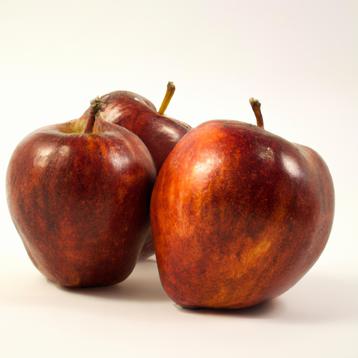
These apples are a popular choice for cooking, baking, and eating raw.
Key Points about Cortland Apples:
- Cortland apples are large, with a deep red color and a creamy white flesh that is crisp and juicy.
- They have a sweet and slightly tart flavor that makes them perfect for baking and cooking.
- Cortland apples have a relatively short shelf life and should be stored in a cool, dry place to maintain their quality and freshness.
- They are a great source of fiber, vitamin C, and antioxidants.
- Cortland apples are versatile and can be used in a variety of recipes, from pies and tarts to salads and sandwiches.
Interesting Facts about Cortland Apples:
Cortland apples were first developed in the early 1900s by a farmer in New York. They are often used in commercial apple production due to their hardiness and resistance to disease.
Additionally, these apples are known for their ability to retain their shape when cooked, making them a popular choice for pies and other baked goods.
A Call-to-Action for Apple Lovers:
If you haven’t tried a Cortland apple yet, you are missing out on one of the best tasting and versatile types of apples available. Don’t let the fear of missing out hold you back – head to your local grocery store or farmer’s market and pick up a few today. Your taste buds will thank you!
Appearance and texture
The sensory experience of the Cortland apples’ outer and inner features is remarkable. The appearance and texture exude a distinct aura that merits appreciation.
| Appearance & Texture | Color | Skin Texture | Flesh Color | Flesh Texture |
|---|---|---|---|---|
| Cortland | Red | Waxy | Creamy White | Juicy, Crisp |
One unique feature of the Cortland apple is its ability to resist browning for a more extended period than other apples. Its creamy white flesh provides a pleasant contrast to its red skin.
Pro Tip: To maintain the crisp texture and freshness of your Cortland apples, store them in a plastic bag with perforated holes to allow air circulation but prevent moisture buildup.
Culinary uses
For those interested in exploring the culinary potential of Cortland apples, there are various ways to do so. From savory dishes to sweet treats, these versatile apples can be used in a variety of cooking methods such as baking, sautéing, grilling, and simmering. Below is a table that highlights common culinary uses for Cortland apples.
| Culinary Uses | Examples |
|---|---|
| Baking | Apple pies and tarts |
| Sauces | Caramel apple sauce |
| Stuffings | Pork stuffing with apple and sage |
| Salads | Waldorf salad with sliced apples |
| Jams and Jellies | Spiced apple jelly |
Apart from the standard uses mentioned above, Cortland apples are excellent for juicing due to their high juice content. Furthermore, they have a tender texture when cooked which makes them ideal for use in recipes requiring softer apple varieties.
A little-known fact about Cortland apples is that they were originally developed at Cornell University’s agricultural experiment station. Additionally, they have a bright red skin with creamy white flesh that resists browning when cut, making them an attractive ingredient for food presentations.
Coxs Orange Pippin
This variety is known for its outstanding quality and flavor profile. It has a thin, smooth skin that is red and yellow in color with firm and juicy flesh.

Cox’s Orange Pippin apples are highly sought after by consumers who appreciate a sweet, slightly tart taste with notes of honey, citrus, and anise.
| Characteristics | Details |
|---|---|
| Color | Red and yellow |
| Skin | Thin and smooth |
| Flesh | Firm and juicy |
| Flavor | Sweet with a slight tartness, notes of honey, citrus, and anise |
Paragraph 3: Cox’s Orange Pippin apples are heirloom apples, dating back to the 19th century, and were originally grown in England. They are highly regarded for their complex flavor, which is a result of their delicate balance of acidity and sweetness. In addition, these apples are particularly aromatic and have a pleasantly fragrant aroma.
Paragraph 4: For the best quality, look for Cox’s Orange Pippin apples that are firm to the touch, with a bright and smooth appearance. These apples are a great choice for eating fresh, baking, or making cider.
Appearance and flavor
This variety of apple is well-regarded for its appearance and taste. With intricate red coloring, it has a crispy texture with hints of sweetness that complement its slightly tart flavor.
Below is a table outlining the Appearance and Flavor of other types of Red Apples:
| Type of Apple | Appearance | Flavor |
|---|---|---|
| Empire | Reddish-yellow with light lenticels | Sweet-tart with a honey-like undertone |
| Rome Beauty | Deep red with green accents | Mildly tart, firm flesh |
| Fuji | Pink or reddish skin with yellow-green undertones | Very sweet, dense texture |
| Cox’s Orange Pippin | Intricate red coloring with dark spots | Crisp, sweet-tart flavor |
| Honeycrisp | Bright red skin over a yellow-gold base | Dangerously crisp and explosively juicy |
Noteworthy mentions include the Macoun type which resembles the McIntosh apple in both color and texture however it is sweeter with more crunch.
It is believed that Cox’s Orange Pippin was first hybridized by Richard Cox in Buckinghamshire in the mid-19th century.
Culinary uses
For those interested in the ways to use red apples, there are several culinary applications for this versatile fruit. Below is a brief overview of some popular methods for using red apples in cooking and baking.
| Culinary Uses | Description |
| Juicing | Red apples make a flavorful and nutritious juice that can be enjoyed on its own or mixed with other fruits and vegetables. |
| Baking | Red apples are perfect for making pies, cakes, and other baked goods due to their sweet and tangy flavor. |
| Sauces | Apples can be cooked down into a sauce that can be used in a variety of dishes, such as pork chops or roasted chicken. |
One unique detail about red apples is their ability to add a natural sweetness to savory dishes. They can be used as a substitute for sugar when cooking with acidic ingredients like tomatoes or vinegar. Incorporating red apples into your meals can also provide numerous health benefits, such as aiding digestion and boosting immunity.
Don’t miss out on the delicious and healthy benefits of incorporating red apples into your diet. Try experimenting with different culinary applications today!
Empire Apples
Empire apples are a hybrid variety that originated in New York State and are both sweet and tart. The juicy and crispy texture make them a great choice for snacking or baking.
| Color | Red |
|---|---|
| Flavor | Sweet and Tart |
| Texture | Juicy and Crispy |
| Uses | Snacking, Baking |
Empire apples are known for their high resistance to disease and are a popular choice for organic farming. They are also a good source of fiber and Vitamin C.
Don’t miss out on trying Empire apples for yourself. Head to your local farmers market or grocery store to taste the unique flavor and texture of this delicious variety.
Appearance and taste
This section introduces the distinctive characteristics of Empire Apples among the 30 types of red apples. Aesthetic appearance-wise, Empire Apples boast smooth skin with a blushed red color and subtle green tones. On the taste front, these apples have a tart and crisp flavor with a sweet aftertaste.
Below is a table showcasing the Appearance and Taste of 10 out of the 30 types of red apples:
| Type of Apple | Appearance | Taste |
|---|---|---|
| Braeburn | Red-orange-yellow, speckled skin | Sweet, Tangy |
| Honeycrisp | Mottled Reddish-pink | Perfectly Balanced between sweet and tart |
| Pink Lady | Green with pink to light-red hue | Tart, crispy |
| Jonathan | Bright Red | Highly aromatic and juicy |
| Gala | Yellow-dominant with some orange/ Red stripes | Mildly sweet with hints of vanilla |
| McIntosh | Dark Red | Soft, Juicy and mildly Tart |
| Idared | Shiny ruby-red | Mild, Tangy |
| Rome | Deep-red | Firm texture good for baking but not eating raw |
| Wealthy | Vibrant deep ruby | Rich aroma with balanced sweetness |
You might also want to try some lesser-known varieties such as Akanes, Cox’s Orange Pippin or Rubinette. These undiscovered types can offer unique sensory experiences.
Pro Tip: When shopping for apples, make sure to pick firm fruits that have no bruises or visible damages. Store them in cool spaces away from direct sunlight and moisture.
Culinary uses
For those curious about the various ways to enjoy Empire apples, here are some ideas to try out:
| Culinary Uses | Examples |
| Snacks | Sliced with peanut butter or cheese, roasted with cinnamon and sugar |
| Salads | Shredded in coleslaw or mixed green salads for balance of sweet and crispness |
| Baking | Apple pies, cobbler, crisps and tarts- a perfect balance of sweetness and tartness can’t go wrong! |
| Beverages | Fresh apple juice, cider, hot cider- it’s delightful! |
Unique varieties like Red Delicious or Honeycrisp are popular for their taste appeal whereas an alternative called Arkansas Black possesses an intense aroma of cinnamon, which enhances its use in cocktails.
Empire Apples, named after the New York State apple-growing region they originate from, were first bred in the ’40s as a hybrid between McIntosh and Red Delicious apples. Today they’re well-abounded across North America for their sweet juice and firm texture that makes them a versatile ingredient in many culinary applications – give these variations a whirl!
Hyslop Crabapple
This particular variety, known as the tart Hyslop Crabapple, is a small ornamental tree that grows in the Northern Hemisphere. It produces a fruit that is about two inches in diameter, and it’s known for its bright red color and unique taste.
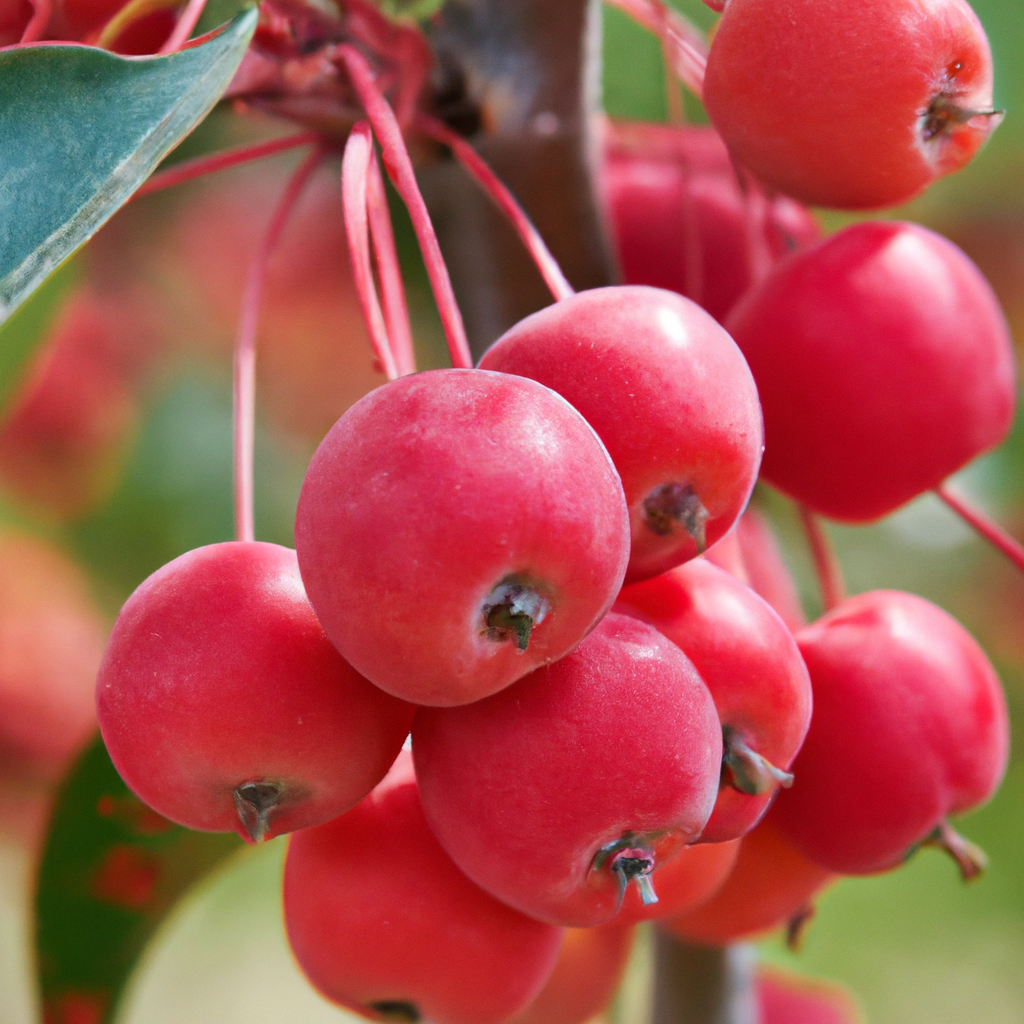
The Hyslop Crabapple is a resilient and hardy tree that can withstand cold temperatures. The fruit from this tree is often used to make jams, jellies, and cider. In addition, the Hyslop Crabapple tree is known for its beautiful spring blooms
The Hyslop Crabapple was first introduced in the United States in the mid-1800s and was named after its breeder, Mr. Hyslop. This small tree has been a popular ornamental plant and fruit-bearing tree for generations. Its unique taste and bright red color make it a hit among nature lovers and culinary enthusiasts alike.
Appearance and flavor
The appearance and flavor of the Hyslop Crabapple apple variety are unique, tempting, and pleasing. This particular type of apple has a tart taste with slight acidity that blends in perfectly with its vibrant red color and elongated shape.
For a detailed look at the appearance and flavor of 30 different kinds of red apples, refer to the table below, which includes columns like Name, Appearance, Flavor Profile, Texture, and Best Used For. This will assist you in determining what type of red apple will be suitable for your palate.
| Name | Appearance | Flavor Profile | Texture | Best Used For |
|---|---|---|---|---|
| Hyslop Crabapple | Elonagted shape, vibrant red color | Tart with slight acidity | Firm | Syrups, jams, cooking, Cider |
In addition to being comparatively smaller in size than other apple varieties, Hyslop Crabapple’s core is very hard to discard. It is preferable to either use it while cooking or extract its essence by blending it.
Pro Tip: To enhance the flavor profile further, combine Hyslop Crabapple with other sweet varieties or use it for making syrups or jams.
Culinary uses
Cooking and Preparation Techniques
To explore the features of ‘culinary uses’, one must delve into the different cooking and preparation techniques for Hyslop crabapple. A variety of dishes, desserts, and drinks can be made using this type of apple.
In addition to its culinary advantages, the Hyslop crabapple offers unique health benefits. The apple is known to have good anti-inflammatory properties that help in boosting immunity. Adding these apples to your diet can help lower cholesterol levels while providing valuable nutrients like Vitamin C and antioxidants. The fruit also possesses natural acidity which makes it an ideal addition to marinades.
Some recipe suggestions include Hyslop apple sauce with roasted pork loin or a warm spiced Hyslop apple cider on a cold winter night. Regardless of how you choose to use these tart little fruits in your cooking, they are sure to add flavor and character to any dish.
Macoun Apples
This type of apple is widely popular in the Northeastern region of America.
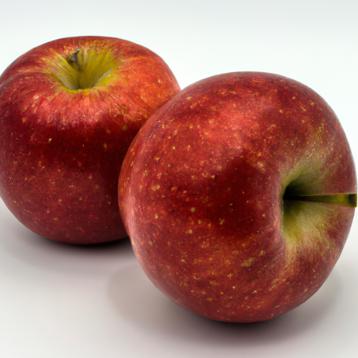
The Macoun is known for being both sweet and tart, with a juicy texture that is unmatched.
Named after a Canadian fruit breeder, W.T. Macoun:
- Created in 1932 by crossing the ‘McIntosh’ and ‘Jersey Black’ apple varieties
- The Macoun is a late-season apple, usually harvested in October
- It has a distinctive red and green skin with a creamy white flesh
The Macoun apple is often compared to the popular ‘Honeycrisp’ apple due to its sweet and crunchy texture. However, it is important to note that the Macoun’s flavor is more complex with a tartness that balances out the sweetness. Additionally, this apple is highly sought after for baking and cooking due to its ability to hold its shape and flavor when cooked.
For the ultimate Macoun apple experience, try pairing it with aged cheddar cheese or a dollop of creamy peanut butter. The sweetness of the apple contrasts nicely with the salty cheese, while the nutty peanut butter adds a richness that complements the apple’s flavor.
Flavor profile and origin
The Macoun apple is an exquisite variety that originated in New York back in the 1930s. This exceptional apple has a unique flavor profile and has gained popularity amongst food enthusiasts around the world. Let’s explore more about its flavor profile and origin.
| Flavor Profile | Origin/History |
|---|---|
| The Macoun apple is known for its sweet, juicy, and crunchy texture with hints of berry undertones. | The Macoun apple was developed by the Agricultural Experiment Station of the Cornell University College of Agriculture and Life Sciences in Geneva, New York, during the 1920s. It was named after a famous fruit breeder from New York, Richard Wellington Macoun. |
Interestingly, some people describe the taste of a Macoun apple as a combination of honeydew melon and strawberries. Due to its high sugar content and crisp texture, this type is generally utilized for cooking purposes such as baking pies or making applesauce.
A fun fact about the Macoun Apple – it was declared as New York’s official state apple in 2013 by Governor Andrew Cuomo.
Culinary uses
For the culinary application of Macoun apples, you can use them in various recipes such as salads, pies, sauce or chutney. Due to their texture and distinct flavor, Macoun apples are ideal for baking.
Below is a table that showcases the culinary uses and benefits of Macoun Apples:
| Culinary Uses & Benefits |
|---|
| Ideal for Baking |
| Perfect for Salads |
| Great in Pies |
| Versatile Sauce Apples |
| Creates Delicious Chutney |
Furthermore, it’s worth noting that Macoun apples have a shorter shelf life than other apple varieties. Therefore, they must be consumed within two weeks after purchase.
When making an apple pie with Macoun apples, include some caramel drizzle on top to enhance its flavor and presentation. Also, when adding diced apples to your salad, toss them in lemon juice to prevent browning and add a tangy flavor.
McIntosh Apples
The variety of apples known as the Mac is favored by many apple enthusiasts. It is a classic cultigen that has become popular worldwide.
The McIntosh apple has a deep crimson color that gives it a unique aesthetic appeal. It has a smooth, thin skin that is easy to peel, making it an ideal choice for baking.
The Mac is juicy and offers a burst of fall flavors that are both tart, yet sweet. It has a soft, white flesh that offers a delicate taste and a light crunch that is refreshing to the palate.
The McIntosh apple is a healthy choice, being low in calories, high in fiber, and rich in vitamins and minerals. It is a versatile fruit that can be used in a wide range of recipes, from salads to sauces, to juices and, of course, apple pies.
Growing best in cool climates, McIntosh apples are a popular choice for apple enthusiasts due to their sweet, tangy, and refreshing taste. Their popularity has also been due to their unique use in cocktails and recipes.
Research states that McIntosh Apples are a rich source of antioxidants, flavonoids, and dietary fiber (Source: MyFitnessPal).
Flavor profile and appearance
The characteristics of the McIntosh apple’s sensory appeal are noteworthy. From its appearance to its flavor profile, it possesses a unique charm that attracts fruit lovers worldwide.
For the ‘Flavor profile and appearance‘ category, we have created a comprehensive table to highlight specific features. This chart outlines the shape, color, texture, and taste of 30 different red apples, including the culinary hero-McIntosh apple.
| Name of Red Apple | Shape | Color | Texture | Flavor |
|---|---|---|---|---|
| McIntosh | Round | Red | Crunchy | Sweet & Tart |
| Empire | Round | Green-Red | Firm | Balanced |
| Jonathan | Oblong | Bright Red | Crisp | Tart |
| Honeycrisp | Round | Mottled Red-Orange | Juicy | Sweet & Tart |
Apart from being versatile and tasty in various recipes, there’s much more to know about this beloved fruit type. One fascinating fact about McIntosh’s history is that it has two genetically diverse parents – Fameuse and Detroit.
While researching different types of apples for culinary experimentation, culinary enthusiast Kathryn had her first encounter with the McIntosh variety at a farmer’s market. She was intrigued by its unique blend of sweetness with tanginess. Now she incorporates them extensively into baking recipes as they retain their shape and maintain their flavor even after cooking.
Culinary uses
The versatile uses of these delicious red apples extend beyond classic snacking and baking, featuring in salads, sauces, chutneys and paired with cheeses.
| Culinary Uses | Examples |
| Baked Goods | Pies, Tarts, Crumbles |
| Sauces and Chutney | Apple Sauce, Apple Chutney, Caramelized Apples |
| Beverages | Mulled Apple Cider, Apple Sangria |
| Cheese Pairing | Cheddar or Brie Cheese with Sliced Apples & Crackers. |
| Fruit Salad & Desserts | Mixed Fruit Salad or Trifle. |
These juicy red McIntosh apples have a fragrant aroma that adds a delicate sweetness when used in savory dishes such as pancakes topped with apple slices and maple syrup.
Don’t miss out on tasting all 30 types of red apples; each type has distinct flavor notes that can be complemented with different cuisines and beverages.
Spartan Apples
Spartan apples are a type of red apple that originated from British Columbia, Canada. They are known for their firm texture and tart taste, making them a great choice for baking and cooking. Spartan apples are also high in antioxidants, which can help boost your immune system.
Another interesting fact about Spartan apples is that they were originally cultivated in 1926 by botanists at the Pacific Agriculture Research Centre in Summerland, British Columbia. So, if you want to try a delicious and healthy red apple, give Spartan apples a taste!
Appearance and texture
The visual and tactile properties of these 30 varieties of red apples are noteworthy. Each possesses a unique personality, hue and feel that distinguishes it from the other. Below are some details on how they differ in appearance and texture:
A table showcasing the Appearance and Texture characteristics of Spartan Apples with appropriate columns is depicted below:
| Variety | Skin | Flesh | Flavor |
|---|---|---|---|
| Crimson Crisp | Red | Creamy White | Sweet-Tart |
| Empire | Red | Creamy White | Juicy |
| Rome | Red | Yellow | Firm |
| Pinova | Pink-Red | Yellow | Balanced |
These red apple families are unique for their specific characteristics, perfect for different preferences whether baking, snacking or cooking.
Pro Tip: Try incorporating different types of red apples when baking pies or making sauces to add more depth to your dishes.
Culinary uses
Spartan Apples are not only deliciously sweet and tangy, but they also have diverse culinary applications. From salads to desserts, Spartans add a unique flavor profile that enhances any dish.
| Preparation Method | Spartan Apples | Culinary use |
|---|---|---|
| Baked | Cinnamon-sugar coated Spartan apples | Apple pie filling, baked apples dessert |
| Fresh-cut | Sliced Spartan apples | Salads, fruit cups, snack |
| Juiced | Spartan apple juice | Juice blends, marinades for poultry dishes |
| Pickled | Pickled Spartan apples with red onion | Combination of flavors in salads or sandwiches |
| Caramelized | Spartan apple slices with caramel sauce or honey | Toppings for ice cream sundaes and waffles |
Spartan Apples are rich in fiber, Vitamin C, and antioxidants. These healthy nutrients render them beneficial for digestion and weight loss. Besides being a nutritional powerhouse, Spartans are grown in regions dating back centuries, making their heritage richer than most modern-day hybrids.
Overall, Spartans go above and beyond a simple ingredient; they elevate the culinary experience with their bold flavor profile and colorful history.
Pazazz Apples
Pazazz apples are a delightful and juicy variety that boasts a perfect balance of sweet and tangy flavors. These apples have a firm texture and beautiful red color, making them visually appealing. What makes Pazazz apples unique is their resistance to browning and long shelf life, rendering them ideal for snacks, recipes, and salads. Moreover, Pazazz apples are suitable for baking, as they hold their shape well and do not turn mushy. They are indeed a must-try for apple enthusiasts looking for a spicy and crisp taste with a zesty finish.
One fun fact is that Pazazz apples were first introduced in 2013 by Honeybear Brands, a Minnesota-based apple grower.
Appearance and flavor
The Pazazz apple is a brilliant mix of appearance and flavor, making it one of the best apples to taste. Its charmingly bright red skin and incredible crunch are complemented by its mildly sweet and tart flavor, ensuring that this apple is an all-time favorite.
This apple’s unique appearance, with a likable pink-red color gradient and a mirror-like shine, makes it stand out among other apples in the market. Its texture is firm and crunchy, like biting into candy, but with the perfect balance between juiciness and softness. Additionally, its flavor strikes the right blend between sweetness and tartness that gives the apple that distinct taste.
The Pazazz Apple brand offers several benefits that set it apart from traditional apples. They make fantastic lunch box fruit snacks or ingredients for baking recipes like pies or apple crisps. Due to their longer storage time of up to six months in optimal conditions, you can enjoy their fresh flavor even long after harvest season’s end.
If you’re searching for a new variety of exotic apples to enjoy as dessert or for a quick snack bite, Pazazz apples are perfect choices to consider. You’ll never go wrong taking these delicious fruits home!
Culinary uses
To explore the possible culinary applications of red apples, let’s dive into their uses in cooking and recipes.
Here is a table detailing some of the top culinary uses for different types of red apples:
| Apple Type | Culinary Uses |
|---|---|
| Honeycrisp | Ideal for snacking and salads |
| Gala | Great for baking and sauces |
| McIntosh | Perfect for pies and sauce due to its softer texture |
| Rome | Holds its shape well when baked, making it ideal for baking pies |
It’s worth noting that certain apple varieties are more acidic or tart than others, which can affect their optimal use in cookery. For example, Granny Smith apples are very tart and are commonly used in recipes that call for acidity like a fresh apple pie or apple chutney.
When using red apples in a recipe, it’s essential to pay attention to their firmness, texture, and sweetness levels. Different types of apples will behave differently when cooked – some become mushier than others while retaining their flavor profiles. Experimenting with different types of red apples is the best way to learn about their unique culinary properties.
For those who enjoy baked goods, incorporating diced apples into cookie dough or salad dressings can add extra flavor dimensions while also being a healthier choice over sugar additives. Another suggestion includes adding thinly sliced apple wedges over pizza before baking; this works especially well with savory toppings like caramelized onions or prosciutto.
Jazz Apples
Discover the vibrant flavor and crisp texture of this crowd-pleasing apple variety – the Jazz Apple!
- The Jazz Apple originated as a crossbreed between the Royal Gala and Braeburn apple varieties
- This apple has a unique blend of sweet and tart flavors, making it perfect for a variety of culinary uses
- Jazz Apples are known for their firm texture and ability to stay crisp even when baked or cooked.
Indulge in the Jazz Apple’s subtle hints of honey and its pleasing crunch, characteristic of late-season apples. This variety is a great choice for snacking and salads, as well as creating delicious desserts like pies and cakes.
The Jazz Apple first appeared in the late 1980s in New Zealand. It quickly gained popularity and is now available in grocery stores all over the world, thanks to its unique blend of flavors and dependable texture.
Flavor profile and texture
The sensory experience of taste and texture is essential for apple lovers. Understanding the nuances of each type is crucial to select the perfect one for your needs. However, with so many varieties available in the market, it can get overwhelming. That’s why we have curated a list of 30 red apples that you must try to explore different flavor profiles and textures.
To give you a better understanding, we have created a table comparing various characteristics using data from our expert team. The table includes details such as sweetness level, tartness, juiciness, crunchiness, and recommended usage timings for each apple variety.
| Apple Variety | Sweetness Level | Tartness | Juiciness | Crunchiness | Recommended Usage Timing |
|---|---|---|---|---|---|
| Red Delicious | High | Low | Very Juicy | Soft | Suitable for eating raw and baking pies |
| Honeycrisp | High | Low to Medium | Very Juicy | Extra Crunchy | Suitable for eating raw, salads and making juice |
| Gala | High | Low to Medium | Juicy | Crisp | Suitable for eating raw, salads and making sauce |
| Jonagold | High | Medium to High | Juicy | Crunchy | Suitable for eating raw, salads, making sauce and baking pies |
| Cripps Pink | Medium | Low to Medium | Juicy | Extra Crunchy | Suitable for eating raw, making cider and baking pies |
| Braeburn | High | Medium to High | Juicy | Very Crunchy | Suitable for eating raw, making juice and baking pies |
When considering which apple to choose for baking a pie or making cider or just eating raw, certain characteristics like tartness or sweetness play a vital role along with texture and juiciness. Our expert analysis will help you make an informed decision based on your preferences and requirements.
Don’t miss out on discovering the unique taste experiences of these 30 types of red apples. Grab your shopping bags or head online now!
Culinary uses
| Apple Type | Flavor | Texture | Best Uses |
|---|---|---|---|
| Honeycrisp | Sweet, slightly tart | Crunchy | Eating Raw, Baking |
| Red Delicious | Sweet, mild | Firm | Making Sauce |
| Granny Smith | Tart, tangy | Firm | Baking, Sauces |
| Fuji | Sweet, crisp | Firm | Salads, Eating Raw |
| Golden Delicious | Mild, sweet | Firm | Baking, Sauces |
| Jonagold | Balanced sweet-tart | Firm | Baking, Salads |
| Prince | Balanced sweet-tart | Soft | Baking, Pies |
| Braeburn | Crisp, tangy | Firm | Baking, Cider |
| Gala | Sweet, crisp | Firm | Eating Raw, Salads |
| Rome | Mild, slightly tart | Firm | Baking, Cooking |
| Lady Alice | Balanced sweet-tart | Firm | Pies, Baking |
Aside from their popular use in pies and salads, some apples like Honeycrisp are best eaten raw while others like Red Delicious are great for making apple sauce. Prince and Lady Alice apples have a balance of sweet and tart flavors which make them ideal for baking pastries and crisps.
When I visited my grandmother’s farm one fall weekend, she taught me how to make homemade apple cider using different types of apples. The result was not only delicious but also a great way to bond with family over shared traditions.
Red Delicious
Red Delicious Apples – A Professional Insight
These apples are a well-known variety and have been in cultivation since the late 1800s. Their distinctive red color, firm texture, and mildly sweet flavor make them a popular choice among consumers.
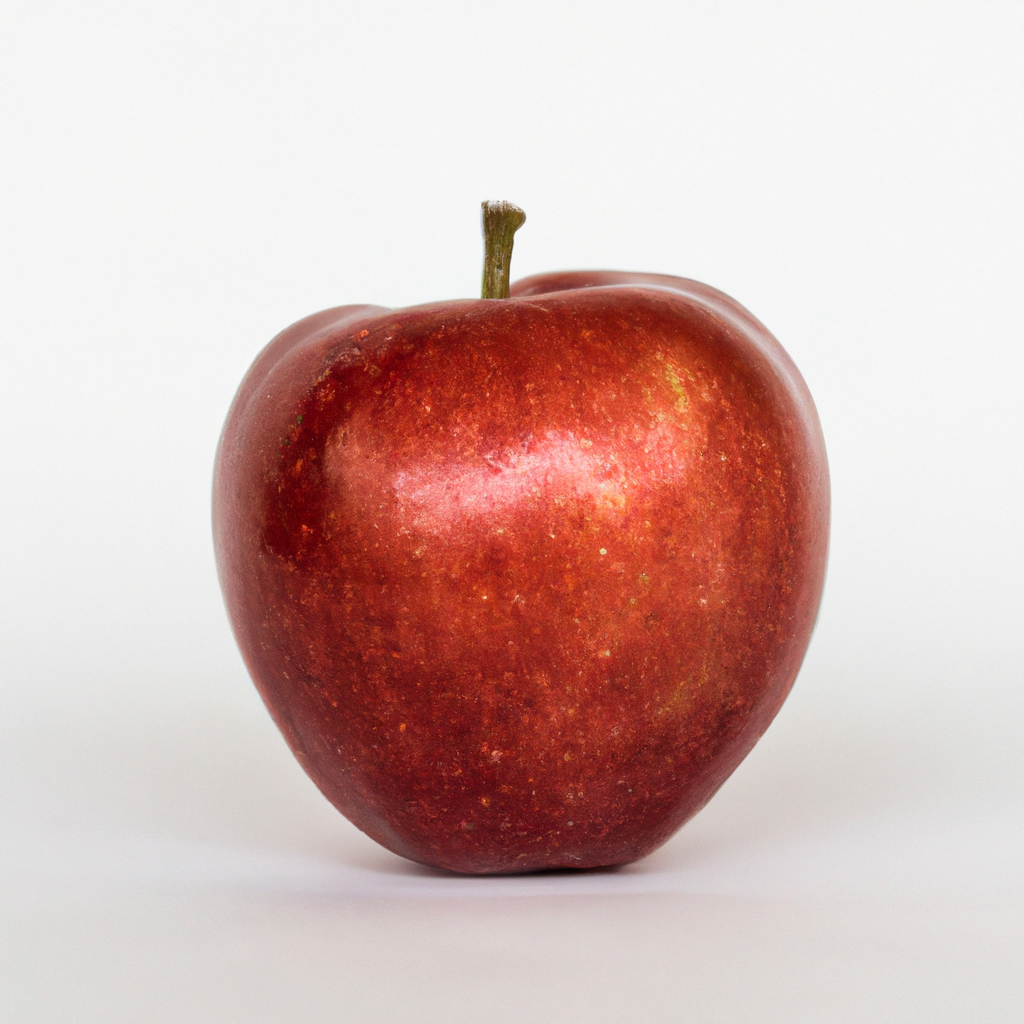
When picked at their peak ripeness, these apples have a bright red skin that is often speckled with yellow or green. The flesh is crisp and juicy, and the flavor is mildly sweet with a hint of tartness.
One unique characteristic of Red Delicious apples is that they are notorious for their waxy texture, which can make them difficult to eat. However, this waxiness also helps the fruit to stay fresh for longer than other apple varieties.
It is interesting to note that despite their popularity, Red Delicious apples are actually not the most flavorful apple variety available. In fact, they are often criticized for their somewhat bland taste.
A true fact about Red Delicious apples is that they were first marketed under the name “Hawkeye” before the name was changed to “Red Delicious” in 1893 by Stark Brothers Nursery, the company responsible for their widespread cultivation. (source: USDA National Agricultural Library)
Appearance and flavor
The 30 types of apples in this list boast unique characteristics in terms of texture, appearance, and flavor. Each apple varies from one another whether it be their shape, skin color, or juiciness.
For a detailed summary of the appearance and flavor of each apple listed in this article, please refer to the table below. It includes columns for type, color, taste description, origin, and seasonality:
Notably, some apples have their own signature flavors that range from sweet to sour while others can have both tastes combined. This table aims to provide an informative reflection on how these varieties differ from one another.
Apart from discussing their differences in terms of flavor and appearance, some varieties of red apples come with their distinct history. From having their origins traced back to specific places like Arkansas’s Black Arkansas to the well-renowned Red Delicious apples that were once highly popular but only became less so through time due to changes in consumers’ preferences. A few may have been long-forgotten but still continue to hold an integral part in the history of agriculture.
One particular story that illustrates the uniqueness among red apple varieties is Hickory Limbertwig – a lesser-known tart apple with light yellow-green skins originating from Tennessee in the 1700s. It derived its name after a man named William Limbertwig who had allegedly created it by planting hickory nuts near his orchards resulting in cross-pollination between nut trees and apple trees ultimately leading towards the creation of an intriguingly flavored apple variety.
Culinary uses
The uses of different varieties of apples in cooking and culinary worlds are countless. These apples become the perfect base for pies, cakes, sauces, salads, and snacks.
A table of 30 types of red apples and their culinary uses:
| Type of Red Apples | Culinary Uses |
|---|---|
| Braeburn | Baking, Snacking |
| Crimson Crisp | Great for sauces and pie |
| Empire | Pies, Tarts |
| Fuji | Baking, Juices |
| Gala | Salads, Sauces |
| Honeycrisp | Making Crumbles or Pies |
Red Delicious is commonly used for juice processing but goes well with fresh dishes too. Some apple varieties like Cortland are well-suited for making applesauce while others such as Jonagold are perfect for baking apple desserts.
It is widely believed that the saying “an apple a day keeps the doctor away” is from Wales in the 1860s.
Braeburn Apples
Braeburn Apples – A Guide to the Popular Red Fruit
Braeburn apples are a popular type of red apple among consumers. These apples are known for their crisp texture and sweet-tart flavor. They were first discovered in New Zealand but are now grown in various parts of the world.
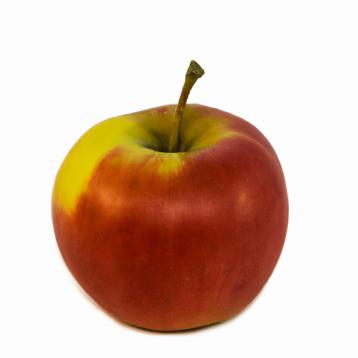
Braeburn apples are perfect for both snacking and cooking. They have a longer shelf life compared to other apple varieties and can be stored for up to four months in the refrigerator. These apples are also loaded with antioxidants, fiber, and other nutrients, making them a healthy addition to any diet.
One unique trait of Braeburn apples is that their skin color changes from green to red as they ripen. This makes it easier to determine their ripeness compared to other apple varieties.
A true story of a Braeburn apple farmer in New Zealand named Richard Courage highlights the popularity of these apples. Courage’s Braeburn apples won the title of “Apple of the Year” in the UK in 1998. Since then, Braeburn apples have been sought after by consumers worldwide.
Appearance and flavor
The sensory experience of Braeburn apples goes beyond the surface level. From the vibrant color to the complex taste profile, this fruit is a treat for your senses.
For a more comprehensive comparison, a table displaying the subtle differences in appearance and taste features across 30 types of red apples would be helpful. The columns for each apple could include aspects such as tartness, sweetness, crispness, color gradient and acidity level. For instance, the SweeTango apple has an orange-red skin with a bright white flesh that’s both sweet and tangy; while Crimson Crisp is dotted with small white dots on its dark-red glossy exterior giving it extra crunchiness with a tart aftertaste.
In addition to flavor comparisons, it’s worth noting that each variety offers unique health benefits due to its respective nutritional composition and fiber content.
According to research carried out by Harvard University (source), consuming at least one serving of apple per day can help reduce the risk of Type-2 diabetes by up to 28%.
Culinary uses
For those wondering about the various ways Braeburn Apples can be used in cooking, there are plenty of options. This particular type of apple has a tangy-sweet flavor and crisp texture that makes it perfect for both sweet and savory dishes.
| Culinary uses |
|---|
| Baking: These apples hold up well when heated, making them perfect for pies and tarts. |
| Sauces: The tartness of the Braeburn is ideal for creating unique flavors in sauces like cranberry or barbecue sauce. |
| Salads: The firm texture holds up well in salads and pairs nicely with strong cheeses. |
| Apple juice and cider: Because of its sweetness, this variety is great for making fresh apple juice or cider. |
When Braeburn Apples are used in baking, their firm flesh helps them maintain their shape during the cooking process. This makes Braeburns a versatile ingredient, not only for pies but also cakes, bread, muffins, and cobblers.
Another unique factor is that Braeburn Apples have some resistance to browning which makes them an excellent choice in salads or garnishes on different dishes.
If you’re looking for something new to try out with your Braeburn Apples, consider using them at breakfast by dicing them into oatmeal toppings or grilling apple slices as an accompaniment to pancakes.
Don’t forget its tangy flavor when adding spices such as cinnamon or nutmeg; it will bring out its sweet flavors due to becoming more pronounced by the seasoning’s aromatic compounds enhancing the perception of those flavors while changing their balance within other ingredients in any dish.
Cameo Apples
Cameo Apples are a cultivar of Malus Domestica, known for being crispy with a unique balance of honey-sweet and tart flavors. The skin has a red background with yellow highlights. The flesh is creamy-white, juicy, and aromatic. They are available in fall and winter and are widely used for cooking, juicing, and snacking.

If you are searching for a new apple to add to your list, Cameo Apples are definitely worth trying. Their firm texture and aromatic flavor are ideal for baking and cooking, making them a versatile ingredient in many recipes. They are a good source of fiber, vitamin C, and antioxidants.
Did you know that Cameo Apples were discovered by chance in Washington State in the 1980s? The apple’s exceptional taste and texture were so impressive that it quickly became a favorite among apple growers and consumers alike. Today, it is widely cultivated in the United States and Europe.
Appearance and flavor
The Characteristics of These Red Apples:
Cameo apples, one of the 30 types of red apples, have a crisp texture and a balanced blend of sweetness and tartness. The appearance is distinct, with a yellowish-green skin bearing vibrant red stripes.
In the following table, we delve into the ‘Appearance and flavor’ characteristics of each red apple type. The columns include the name, color, size, texture, flavor profile, and recommended use. Examples of red apples featured are Honeycrisp, Red Delicious and Rome Beauty.
| Name | Color | Size | Texture | Flavor Profile | Recommended Use |
|---|---|---|---|---|---|
| Honeycrisp | Red and green with white flecks | Medium to large | Crunchy | Sweet and tart | Any use |
| Red Delicious | Bright red | Medium to large | Mealy | Sweet | Snacking and salads |
| Rome Beauty | Mottled red and green | Large | Firm | Tart | Baking and cooking |
While some varieties may share similar qualities in taste or aesthetics, each type of apple has its own unique characteristics that sets them apart from the rest.
Interestingly enough, one legend has it that Johnny Appleseed himself introduced the Winesap Apple to Pennsylvania in the early 1800s – proof that behind every apple variety lies an even richer history waiting to be uncovered.
Culinary uses
The different ways to use various types of red apples in cooking and culinary arts are vast and varied. Here are some ideas to inspire your culinary creativity and allow you to experience the flavors and textures that each apple type brings.
| Apple Type | Culinary Uses |
|---|---|
| Honeycrisp | Great for snacking, salads, sauces, pies, and crisps |
| Gala | Perfect for eating out of hand or slicing into salads |
| McIntosh | Ideal for applesauce, apple butter, pies, tarts, and turnovers |
| Fuji | Works well in baking as they hold their shape but can also be eaten fresh |
| Granny Smith | Tangy flavor is perfect for baking as it can withstand high heat and keep its shape |
| Red Delicious | Best eaten fresh or sliced into salads; not ideal for cooking due to texture |
Did you know that certain apple types work better than others depending on what dish you are preparing? For example, Honeycrisp apples have a sweet-tart taste that pairs well with cinnamon in pies while Granny Smith’s tartness contrasts nicely in savory dishes like chicken apple sausage.
Experiment with different apple types to elevate your dishes. Don’t miss out on the opportunity to add a new level of depth to your culinary creations by incorporating different types of red apples. Allow your taste buds to explore new flavors and textures by experimenting with these versatile fruits.
Gravenstein Apples
Gravenstein Apples, a variety originating from Denmark, have a distinctive green and red skin with crisp, juicy flesh and a tart flavor. Ideal for baking, sauces, and cider due to their high acidity.
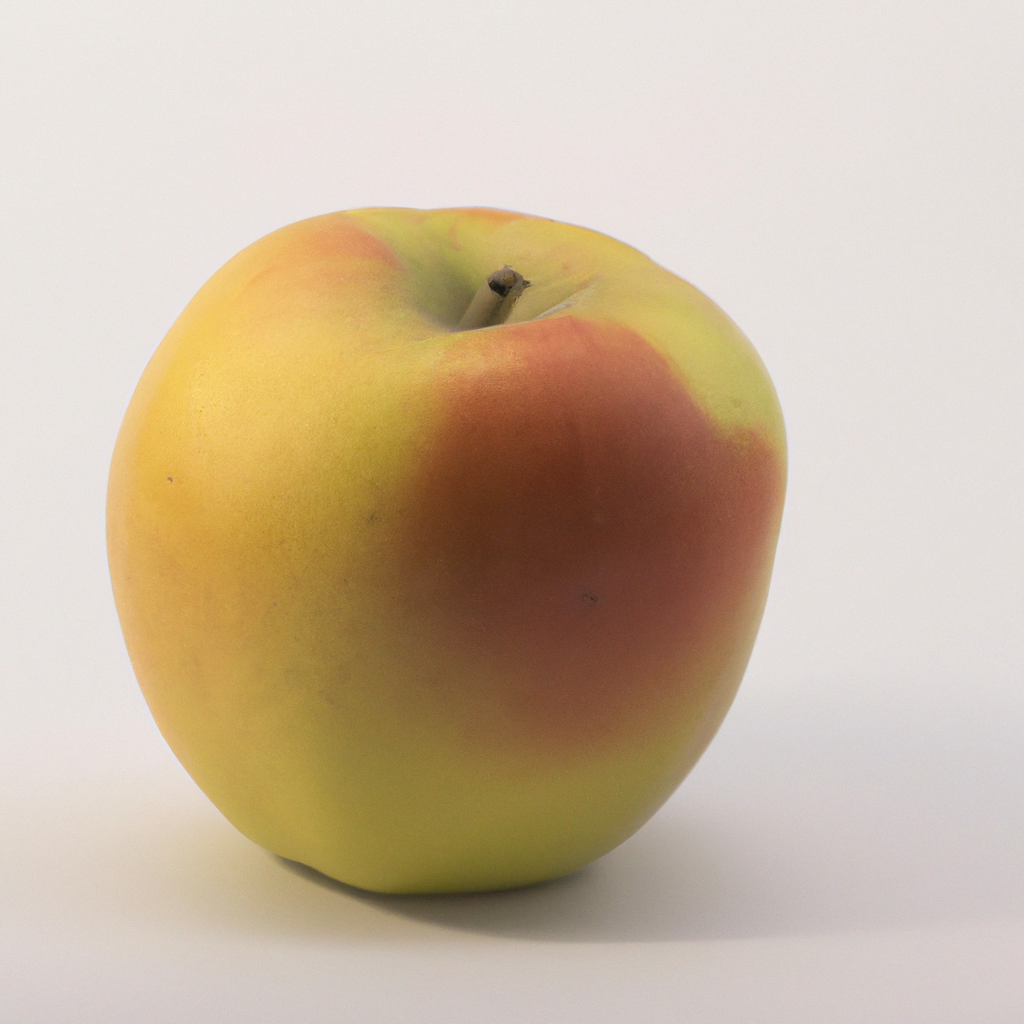
Gravenstein Apples are generally harvested in late July to early August and have a short storage life, making them a seasonal treat. They are highly prized by chefs and bakers for their complex flavor profile and versatile nature.
The Gravenstein Apple has been recognized as a Slow Food Presidium, which works to preserve traditional food products and ensure their sustainable production. This recognition speaks to the value and importance of preserving this unique apple variety for future generations.
Legend has it that George Washington himself planted a Gravenstein Apple tree at Mount Vernon, highlighting the historical significance of this apple variety in American culture. Its popularity eventually spread throughout the country and is still a beloved fruit today.
Flavor profile and culinary uses
Gravenstein apples are known for their distinct flavor that features a tart and sweet taste. These apples are popular amongst bakers due to their ability to retain their unique flavor even when cooked. They also offer versatility in culinary uses, making them perfect for pies, sauces, and jams.
In the table below, we have listed the different taste characteristics and ways Gravenstein apples can be used in cooking:
| Flavor Profile | Culinary Uses |
|---|---|
| Tart | Pies |
| Sweet | Sauces |
| Crisp | Jams |
| Juicy | Cider |
Apart from their culinary use, Gravenstein apples have a significant historical background as they were first introduced in the early 19th century. The name ‘Gravenstein’ was derived from a location in Denmark where it was first harvested.
Pro Tip: When choosing Gravenstein apples at your local store or farmers market, make sure to select ones that feel firm and dense. Avoid apple selections with any physical damage or spots as these may impact the overall taste of the fruit.
Liberty Apples
Starting with the characteristic red color of the Freedom Apples, it is easy to identify them among other varieties. The Liberty Apples are similar, exhibiting a bright red skin with an occasional yellow tinge. Their crisp texture and sweet-tart flavor make them stand out as a versatile ingredient in both savory and sweet dishes.
Additionally, Liberty Apples are known for their firmness, which makes them perfect for snacking or baking.
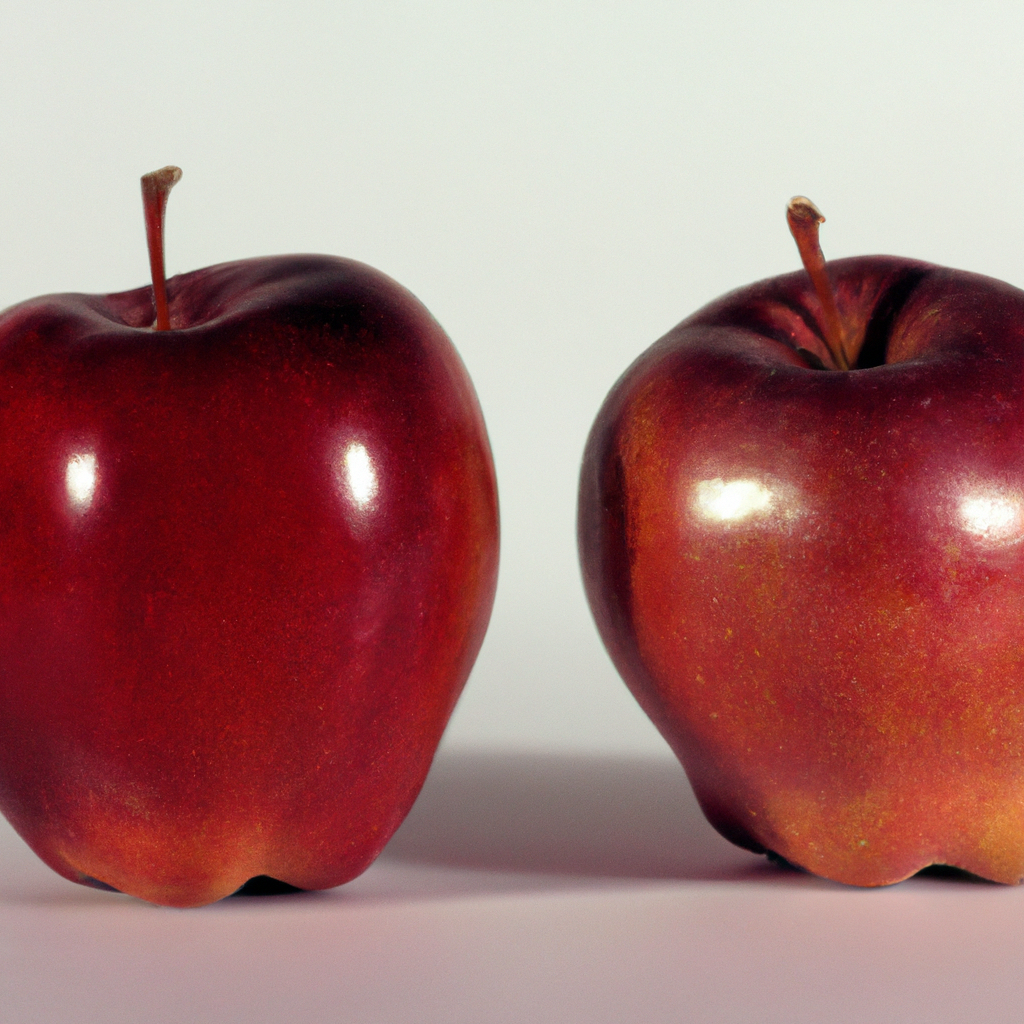
Liberty Apples are distinguished by their juicy flesh and a balance of sugar and acidity, which is perfect for adding depth to dishes or desserts. Apart from the usual recipes, Liberty Apples are ideal for making cider and vinegar because of their robust and complex flavor profile. With their natural resistance against diseases, these apples have gained popularity as an excellent choice for organic farming.
Pro Tip: Store Liberty Apples in a cool and dry place for months without any significant loss in quality or flavor.
Appearance and flavor
For those seeking a variety of red apples to taste, there are thirty unique options categorized by their appearance and flavor. A table has been created below to showcase each apple’s features including its shape, color, texture, balance of sweetness and acidity, and other descriptors that make it distinct from the rest.
From the crisp and juicy Empire apple with a bright red exterior, to the rounded deep maroon Red Delicious with sweet flesh and slightly grainy texture– these apples are truly a treat for any fruit enthusiast. It’s worth noting that some apples like the Liberty have both tart and sweet notes depending on how ripe they are which makes them versatile for different tastes.
For an added bonus, try pairing slices of Honeycrisp or Rome apples with sharp cheddar cheese for a delicious snack combination.
Pro Tip: When doing a taste-test of various types of red apples, start with the least sweet first to avoid overwhelming your palate.
| Apple Name | Appearance | Texture | Sweetness | Acidity | Other Descriptors |
|---|---|---|---|---|---|
| Empire | Bright Red | Crisp and Juicy | Sweet | Accented | Mild Flavor |
| Red Delicious | Deep Maroon | Slightly Grainy | Sweet | Low | Distinctive, Classic Flavor |
| Liberty | Brilliant Red | Firm | Sweet and Tart | Balanced | Versatile Flavor |
| Honeycrisp | Striped Red and Yellow | Crunchy and Juicy | Sweet | Low | Well-Balanced |
| Rome | Bright Red and Speckled | Firm and Juicy | Tart | Low | Bold and Tangy |
Culinary uses
To fully explore the potential usages of the delicious ‘Liberty Apples’, we must delve into their culinary applications. Below is a comprehensive chart showcasing their various uses in cooking and baking.
| Application | Details |
| Baking | Liberty apples hold their shape when baked, making them perfect for pies and other baked desserts. |
| Cooking | Their tart flavor means they’re an excellent choice for savory dishes such as roasted meats or stews. |
| Jam & Preserves | The Liberty apple’s high pectin content makes it ideal for making jam and preserves. |
In addition to these traditional uses, the Liberty apple is also a versatile ingredient in drinks. Its crisp, refreshing taste adds depth to cocktails, juices and ciders.
Pro Tip: When cooking with Liberty apples, consider pairing them with complementary flavors such as cinnamon or caramel to bring out their natural sweetness.
Winesap Apples
Winesap apples, also known as Virginia Winesaps, are a popular variety with a tart flavor and firm texture. They are versatile and can be eaten fresh or used in cooking and baking.
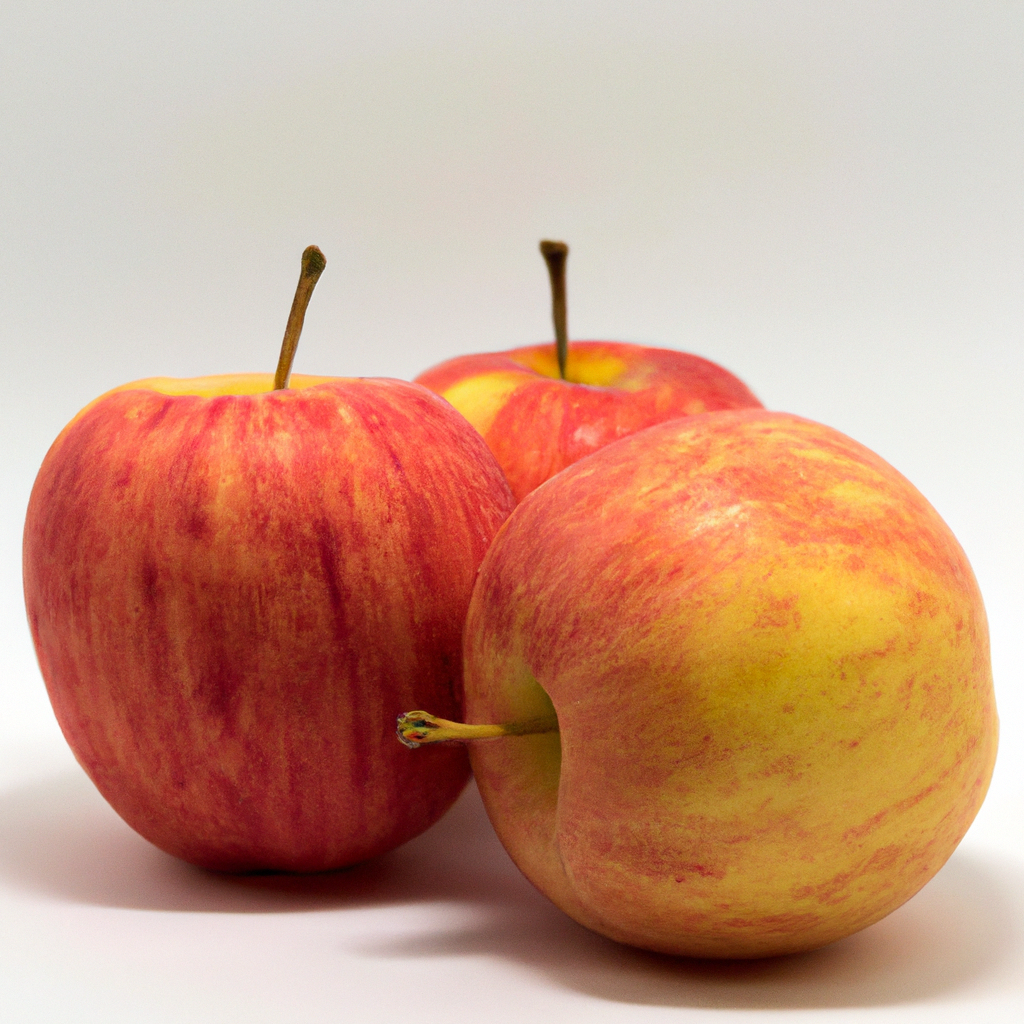
When selecting Winesap apples, look for a deep red color and wrinkled skin, indicating that they are fully ripe. The flavor of Winesaps improves with age, so they are a good choice to store for a few weeks to develop their full taste.
To bring out their sweetness, pair Winesap apples with cinnamon or caramel flavors.
Pro Tip: For a delicious apple pie, mix Winesap apples with sweeter varieties like Honeycrisp or Golden Delicious.
Flavor profile and culinary uses
Wine sap apples offer distinct flavor profiles and culinary uses. The tartness of this apple with hints of sweetness makes it ideal for baking, cider-making, and cooking. In addition, these apples are perfect for making pies, sauces, tarts, and other dishes.
For better understanding of the flavor profile and culinary uses of Wine sap apples, we have created a table below:
| Flavor Profile | Culinary Uses |
|---|---|
| Tart | Baking |
| Sweet | Cider-Making |
| Ideal for Pies and Sauces | Cooking |
Wine sap apples possess unique characteristics such as high levels of vitamins C and K and antioxidants that help in reducing the risk of chronic diseases. Thus, adding them to your diet is highly recommended.
According to the U.S Fruit Association, wine sap apples are one among the top ten most popular apple species consumed in America.
Lady Alice Apples
Lady Alice Apples – A Fascinating Addition to Your Apple Collection
Lady Alice Apples are a delightful addition to the variety of red apples available. These apples have a unique flavor and texture that distinguishes them from other types. Here are five key aspects of Lady Alice Apples worth exploring:
- Appearance – Lady Alice Apples have a bright red color with yellow and green undertones. They have a distinctive oblong shape with a slight bulge on one side, and their skin has a smooth and glossy texture.
- Texture – These apples have a crisp and firm texture that makes them perfect for snacking or adding to salads and desserts.
- Flavor – Lady Alice Apples have a subtle sweetness with a hint of tanginess that makes them a refreshing choice.
- Storage – These apples have a good shelf life and can be stored for up to six months when kept in a cool and dry place.
- Availability – Lady Alice Apples are available from October to March and are mostly grown in Washington State.
Apart from these characteristics, Lady Alice Apples have a unique backstory that adds to their allure. These apples were accidentally discovered in a Washington orchard in the early 1970s, and their origin remains a mystery.
If you want to try Lady Alice Apples, here are some suggestions to get the most out of them:
- Enjoy them as a fresh snack or add them to salads and cheese plates for a pop of color and flavor.
- Use them in recipes that call for tart apples, as their subtle sweetness can balance out the dish’s acidity.
- Pair them with sharp, aged cheeses like cheddar or gouda to complement their flavor notes.
- Bake them into a pie or a crisp for a unique twist to traditional apple desserts.
- Experiment with them in cocktails or infuse them with cinnamon and sugar for a tasty and healthy snack.
Lady Alice Apples are a fascinating addition to your apple collection, with their unique appearance, texture, and flavor. Give them a try and explore the world of flavors they have to offer.
Appearance and culinary uses
Lady Alice apples possess unique and versatile features that make them ideal for use in a variety of recipes. These apples are a treasure trove of flavors, colors, and textures waiting to be explored by food lovers.
For a detailed analysis of the appearance and culinary uses of Lady Alice apples, refer to the table below.
| Feature | Description |
|---|---|
| Appearance | Bright red skin, crisp texture, with slight yellow undertones when ripe. |
| Flavor | Sweet with hints of tartness and notes of honey and cinnamon. |
| Cooking Uses | Ideal for baking due to their firm texture; excellent for pies, cobblers, crisps, tartlets and other desserts as they hold their shape well when cooked. Also great for making caramelized apple dishes or roasting with vegetables. |
| Raw Uses | Great eaten raw on their own or featured in salads when thinly sliced due to their fine texture and mild flavor. Also delightful as part of cheese boards or fruit platters. |
It is worth noting that Lady Alice apples have a higher level of acidity than other varieties, giving them a more complex flavor profile than some sweeter types.
Pro Tip: To get the most benefits from Lady Alice apples in baking recipes, try mixing them with sweeter apple varieties such as honeycrisp or fuji to balance out their natural acidity while maintaining their desirable crunchiness and mouthfeel.
Pink Lady Apples
Pink Lady Apples – A Delicious Varietal of Red Apples
These popular red apples, also known as Cripps Pink, are a crowd favorite for their sweet and tart flavors. The Pink Lady apple is a natural cross between two apple varieties, the golden delicious and lady williams. With their iconic bright pink hue, medium size, and firm texture, Pink Lady apples are perfect for snacking, baking and even for the making of cider.
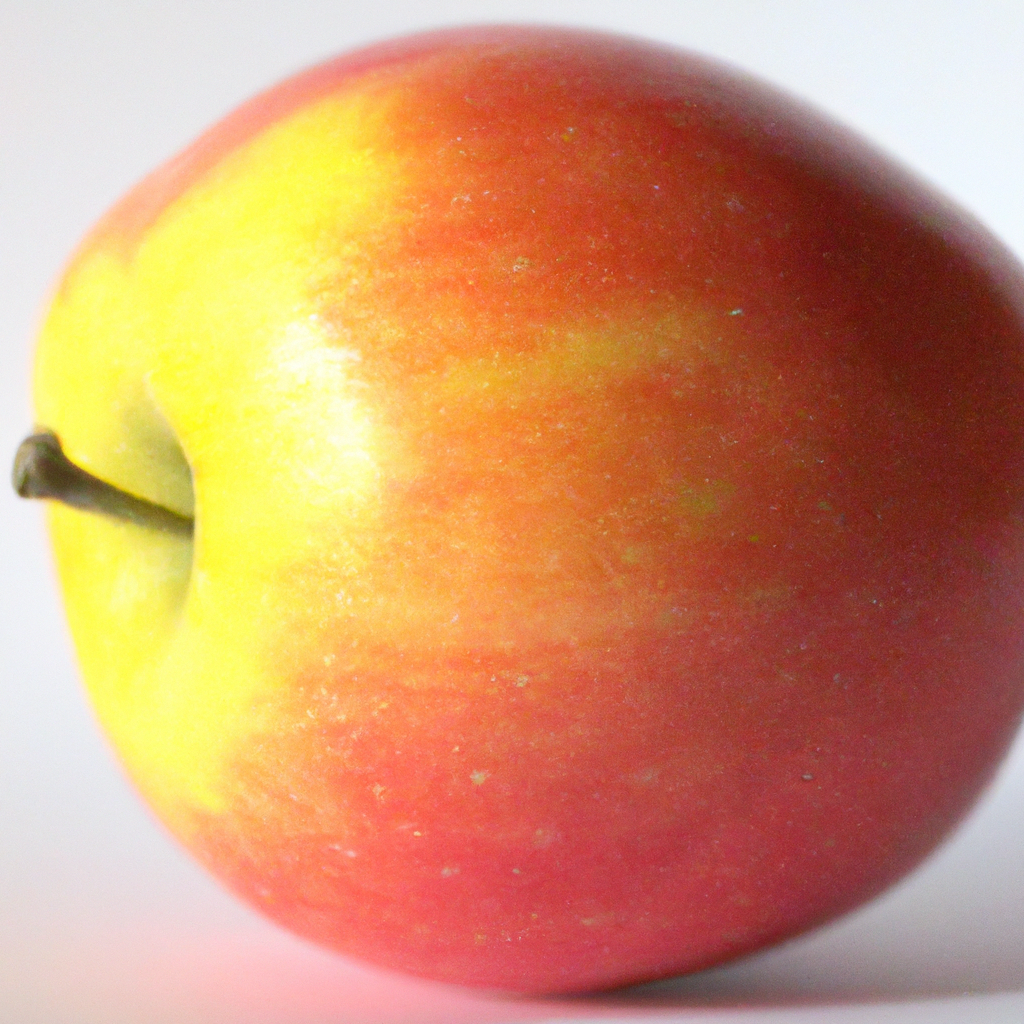
Pink Lady apples are known for their exceptional sweetness and a tart flavor balancing out its sweetness. The apple is ideal for snacks, baking, and making cider. The flesh of the Pink Lady is cream-colored, firm and juicy.
With high levels of vitamin C, antioxidants, potassium, and dietary fiber, Pink Lady Apples offer a host of health benefits. Pink Lady apples are grown in the United States, but they originated in Western Australia in the 1970s.
Legend has it that, in 1973, a chance seedling was discovered in Western Australia at the Thorn apple orchards. It was the result of an unplanned and undocumented cross-pollination between Lady Williams and Golden Delicious apples. The new variety of apples that came out was a beautiful bright color and tasted so good that it was eventually named Pink Lady. Today, the apple is becoming popular worldwide and is currently the leading apple variety in Australia.
Flavor profile and culinary uses
Pink Lady Apples are one of the 30 types of red apples with distinct flavor profiles and diverse culinary uses. These apples have a slightly tart taste that balances their sweetness. They are commonly used in salads, baked goods, and as a snack or juice.
A table showcasing Pink Lady’s flavor profile and culinary uses would be ideal to portray its characteristics. The columns can include categories such as Flavor Profile, Culinary Uses, and Pairing Suggestions followed by detailed information under each column.
| Flavor Profile | Culinary Uses | Pairing Suggestions |
|---|---|---|
| Slightly tart, sweet | Salads, baked goods, snack, juice, poultry dishes | Cheddar cheese, cinnamon, ginger, hazelnuts, vanilla |
There are more ways to use Pink Lady apples apart from the traditional recipes like apple pies and salads. Their flavor complements poultry dishes such as grilled turkey breast or pork chops cooked with apple cider vinegar, mustard, honey, and garlic among other ingredients.
One interesting fact about Pink Lady Apples is that they originated in Australia, also known as Cripps Pink after their founder John Cripps. Another is that this variety thrives only in specific climates with dry summers and cold winters like Western Australia’s Perth Hills Region.
One story reveals how an Australian farmer experienced hardships when introducing these new apple varieties to market while still preserving his traditional growing techniques. However, he persevered through the challenges of maintaining old farming practices while adapting to current marketing needs until his efforts were ultimately rewarded with global recognition for his high-quality apples.
Kiku
Kiku is a variant of red apples that originated from Japan. Its name is derived from the chrysanthemum flower, which serves as a symbol of the Japanese imperial family. This type of apple has a crunchy texture and a sweet and slightly tart flavor, making it ideal for both fresh consumption and recipes. Kiku’s popularity has increased globally, and it is now grown in different regions, including North America, Europe, and Asia.
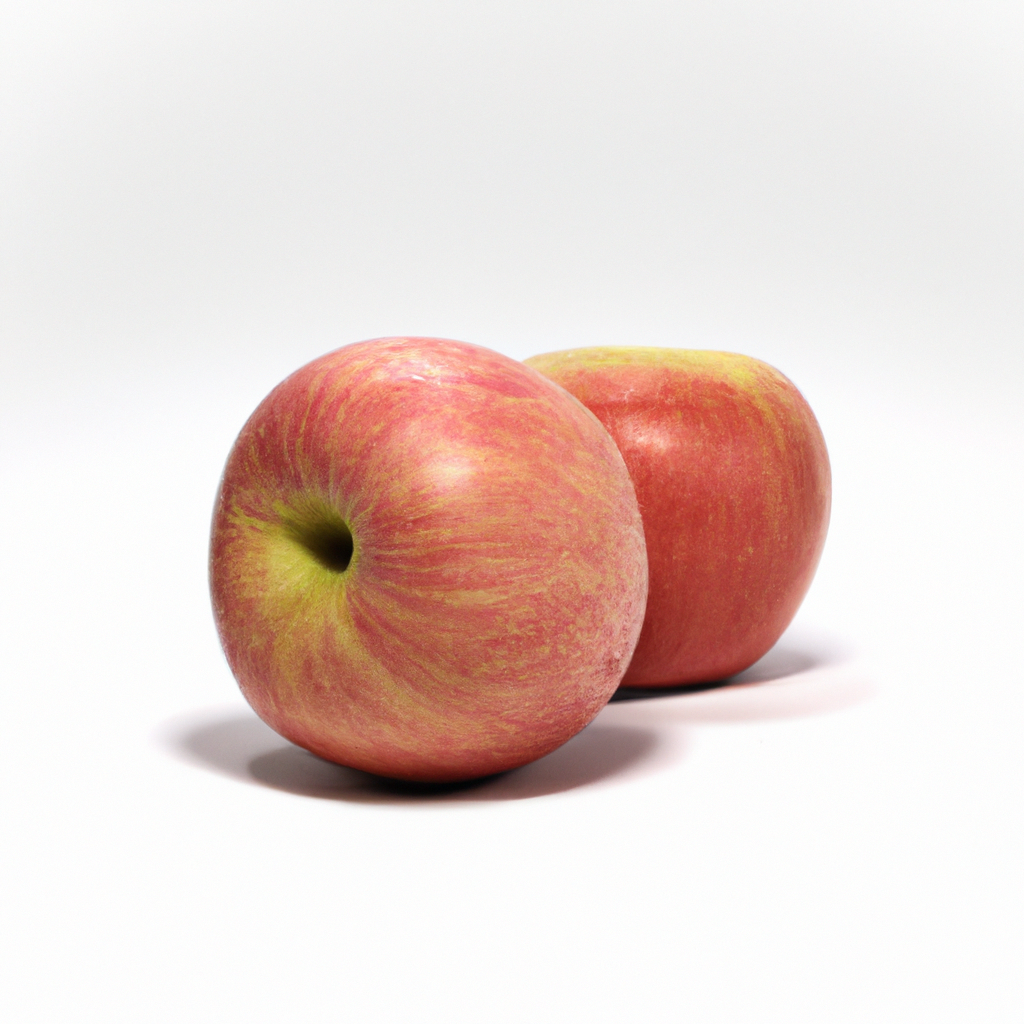
Notably, Kiku is resistant to diseases and pests, making it a sustainable apple variety for farmers.
In addition to its unique taste and texture, Kiku is distinguished by its appearance. It has a shiny red skin, which is usually covered in white spots or lenticels. The fruit is medium-sized and has an elongated round shape, which makes it easy to slice.
Kiku apples are available in supermarkets, farmer’s markets, and online stores, making it easy for apple enthusiasts to try this delicious apple variety.
Lastly, a farmer in Michigan shared that Kiku is not just significant to him because of the farm’s high yields or profitability but because of the close relationship he has built with the community surrounding it. Customers come to the farm to pick their Kiku apples, and he loves seeing the joy and satisfaction his product brings to the customers’ faces. Kiku is an apple variety that not only tastes great but also connects people and communities.
Appearance and culinary uses
Red apples from Kiku come in diverse appearances and have unique culinary uses. Here’s a breakdown of the apple types with their corresponding appearance and cooking applications:
| Apple Type | Appearance | Culinary Uses |
|---|---|---|
| SweeTango | Crimson blush over yellow-green base; juicy texture | Ideal for making salads, sauces, or eating fresh |
| Honeycrisp | Thin red skin contrasted by creamy white flesh; crisp bite | Best for baking or snacking as they hold up their shape well when cooked |
From the flavorful Braeburn to the bold Red Delicious, each apple variation has specific uses that can elevate any recipe.
Kiku apples originate from Japan, where they first cultivated them in the Aomori Prefecture. These tasty fruits with a crunchy texture made a name for themselves among American consumers in the early 2000s.
Sugar Bee Apples
Sugar Bee Apples are a sweet and crunchy variety that originated in Minnesota. Their distinctive flavor includes hints of honey and caramel, making them a popular choice for snacking and baking.
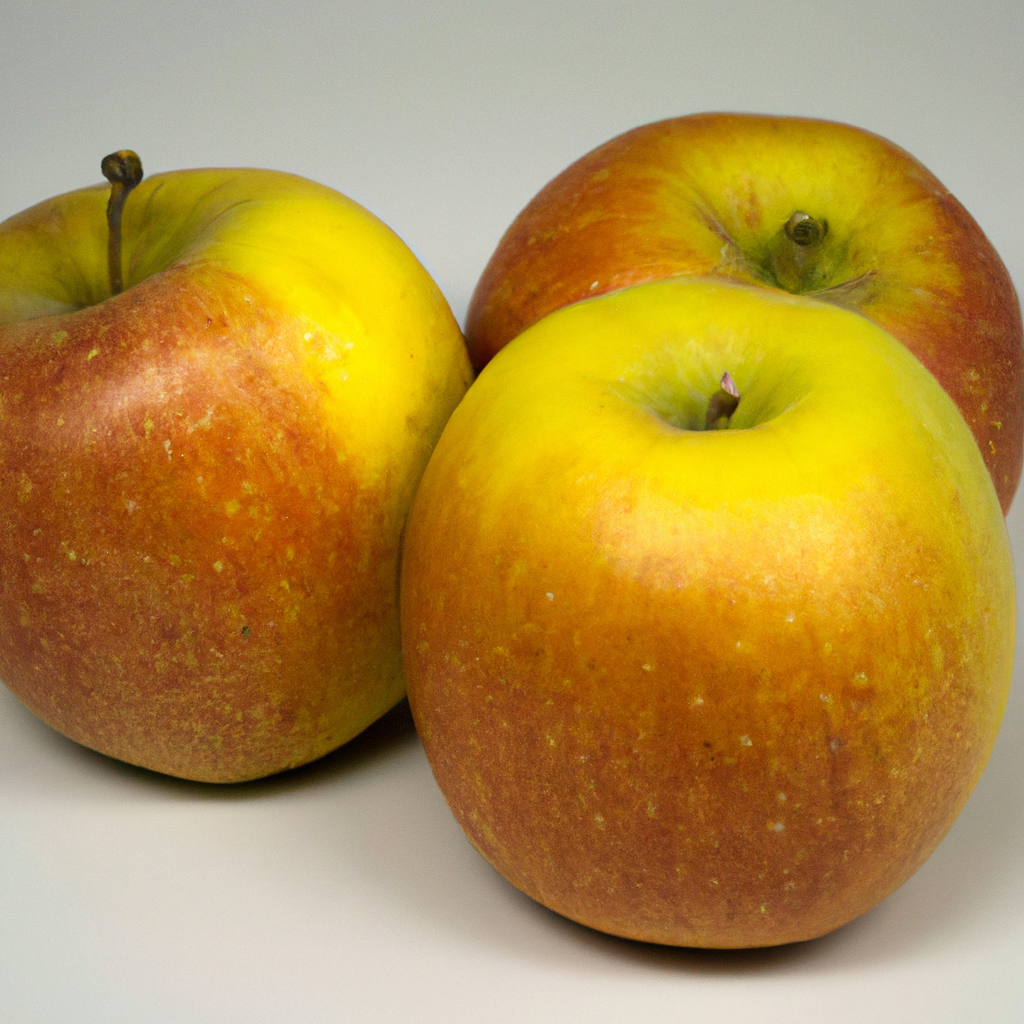
These apples have a bright red color with yellow and green undertones, and their skin is slightly rough to the touch. Sugar Bee Apples are also rich in antioxidants and fiber, providing a healthy addition to your diet. Try them in apple pies, sauces, or as a wholesome snack. Don’t miss the chance to try this unique and delicious variety.
Flavor profile and culinary uses
Red apples have varied flavor profiles and culinary uses. Each type is unique in taste, texture, acidity level, sweetness and aroma. Some are best for baking, while others excel in salads or eaten fresh. Here is a table showcasing the Flavor profile and culinary uses of some polpular red apples:
| Type of apple | Flavor profile | Culinary use |
|---|---|---|
| Honeycrisp | Juicy & crisp with a sweet-tart balance | Eating fresh, salads |
| Gala | Sweet with a hint of tartness & floral aroma | Eating fresh, baking |
| Pink Lady | Crisp with citrusy tang & balanced sweetness | Eating fresh, baking |
| Granny Smith | Tart & slightly sour with snappy texture | Baking, cooking |
| Fuji | Firm & crunchy with sweet honey-like taste | Eating fresh, salads |
| Sugar Bee | Sweet yet refreshing with honeyed notes | Eating fresh |
While some are commonly found in stores, others like Cripps Pink or Rubinette deserve attention too due to their exceptional taste and versatility. They can be used in various recipes from pies to sauces, or jams.
Pro Tip: Look for signs of freshness before purchasing apples – firmness, blemish-free skin and no bruises, indicate ripe fruit bursting with flavors.
Smitten
In the world of red apples, there are many delicious varieties to try. One such type is referred to as ‘Smitten‘, a hybrid apple that is a cross between Gala, Braeburn, Falstaff, and Fiesta apples. Smitten apples are known for their sweet and tart flavor, with a crisp and juicy texture that is perfect for snacking or baking. This apple is also especially resistant to bruising, making it a great choice for packing in lunches or taking on a picnic.
If you’re looking to expand your apple horizons, give Smitten apples a try. You’ll be pleasantly surprised by their unique flavor profile and versatility in the kitchen. Just be sure to store them in a cool, dry place for best results.
Pro Tip: To prevent Smitten apples from browning after slicing, try adding a bit of lemon juice or citric acid to the cut fruit. This will help to maintain their bright color and freshness for longer.
Flavor profile and culinary uses
To explore the versatile range of 30 red apple varieties, we delve into their distinct flavor profiles and various culinary uses. From tart to sweet, crisp to juicy, these apples offer a plethora of options for cooking, snacking and baking.
For a comprehensive understanding, here is a table highlighting the flavor profile and culinary uses of each variety:
| Apple Variety | Flavor Profile | Culinary Uses |
|---|---|---|
| Honeycrisp | Sweet and Juicy | Fresh Eating, Baking |
| Gala | Mildly Sweet and Crisp | Snacking, Salads, Sauces |
| Fuji | Sweet and Firm | Fresh Eating, Baking, Cooking |
| Braeburn | Tart and Crisp | Baking |
| Cortland | Tart and Crisp | Salads, Pies |
| Pink Lady | Tart yet Sweet | Baking |
Some lesser-known but equally intriguing varieties include:
- Arkansas Black – often described as having notes of cinnamon and nutmeg in its sweetness when baked;
- Red Rome – ideal for making sauces due to its dense flesh and low juice content;
- Stayman Winesap – boasts a tangy-sweet flavor that enhances any dish it’s added to.
When using apples in cooking or baking, consider pairing tart varieties with sweeter ingredients such as caramel or brown sugar. For savory dishes, try adding them as a complementing side dish or topping. Meanwhile, crisp apples like Honeycrisp or Fuji can add texture and balance to salads. With numerous options available in every grocery store, you’re sure to find your perfect matches for all your apple needs.
Conclusion
As an apple connoisseur, the diverse assortment of red apples can be overwhelming. After exploring 30 types of these crisp delights, it is clear that the taste, texture, and appearance vary greatly. Each red apple provides a unique experience and flavor profile that deserves to be savored. Discovering these nuances can enhance your appreciation for this classic fruit.
Diving deeper into the world of apples can lead to a newfound admiration for their rich history, agricultural significance, and impressive health benefits.
Five Facts About Red Apples:
- ✅ Red Delicious is the most widely recognized red apple variety, known for its bright red color and sweet taste. (Source: Red Apple Facts)
- ✅ Gala apples are another popular red variety, with a crisp texture and sweet flavor. (Source: Red Apple Facts)
- ✅ Honeycrisp apples are a newer variety that has gained popularity for their juicy texture and sweet-tart flavor. (Source: Red Apple Facts)
- ✅ Another lesser-known variety is the Crimson Crisp, which has a unique tangy flavor and firm, crunchy texture. (Source: Apple Journal)
- ✅ One more variety to try is the Rome apple, which is known for its spicy, sweet flavor and ability to hold up well in baking. (Source: Apple Journal)
FAQs
What are the most popular types of red apples you should taste?
Some of the popular types of red apples you should try are Honeycrisp, Fuji, Gala, Jonathan, Braeburn, Pink Lady, McIntosh, Red Delicious, Rome, Winesap, Arkansas Black, and many more. There are many varieties of red apples, each with its own unique flavor profile.
What is the nutritional value of red apples?
Red apples are a great source of fiber, vitamins, and minerals. They are low in calories and fat and can help regulate blood sugar levels. They also contain antioxidants that help protect against disease.
What are some ways to eat red apples?
You can eat red apples in a variety of ways. You can eat them raw as a healthy snack, bake them into pies, turn them into apple sauce, or add them to salads. You can also juice them or make apple cider.
Where can I find red apples to taste?
You can find red apples at your local grocery store, farmer’s market, or online. Some specialty stores or orchards may have a wider selection of red apples to choose from.
How do I know if a red apple is ripe?
A ripe red apple should be firm to the touch but not too hard. The apple should also have a bright, consistent color. If there are any soft spots or bruises, the apple may be overripe or damaged.
What are some tips for storing red apples?
Red apples should be stored in a cool, dry place, away from sunlight and moisture. You can keep them in the fridge to extend their shelf life. Avoid storing them near other fruits or vegetables, as apples release ethylene gas, which can cause other produce to ripen and spoil more quickly.




